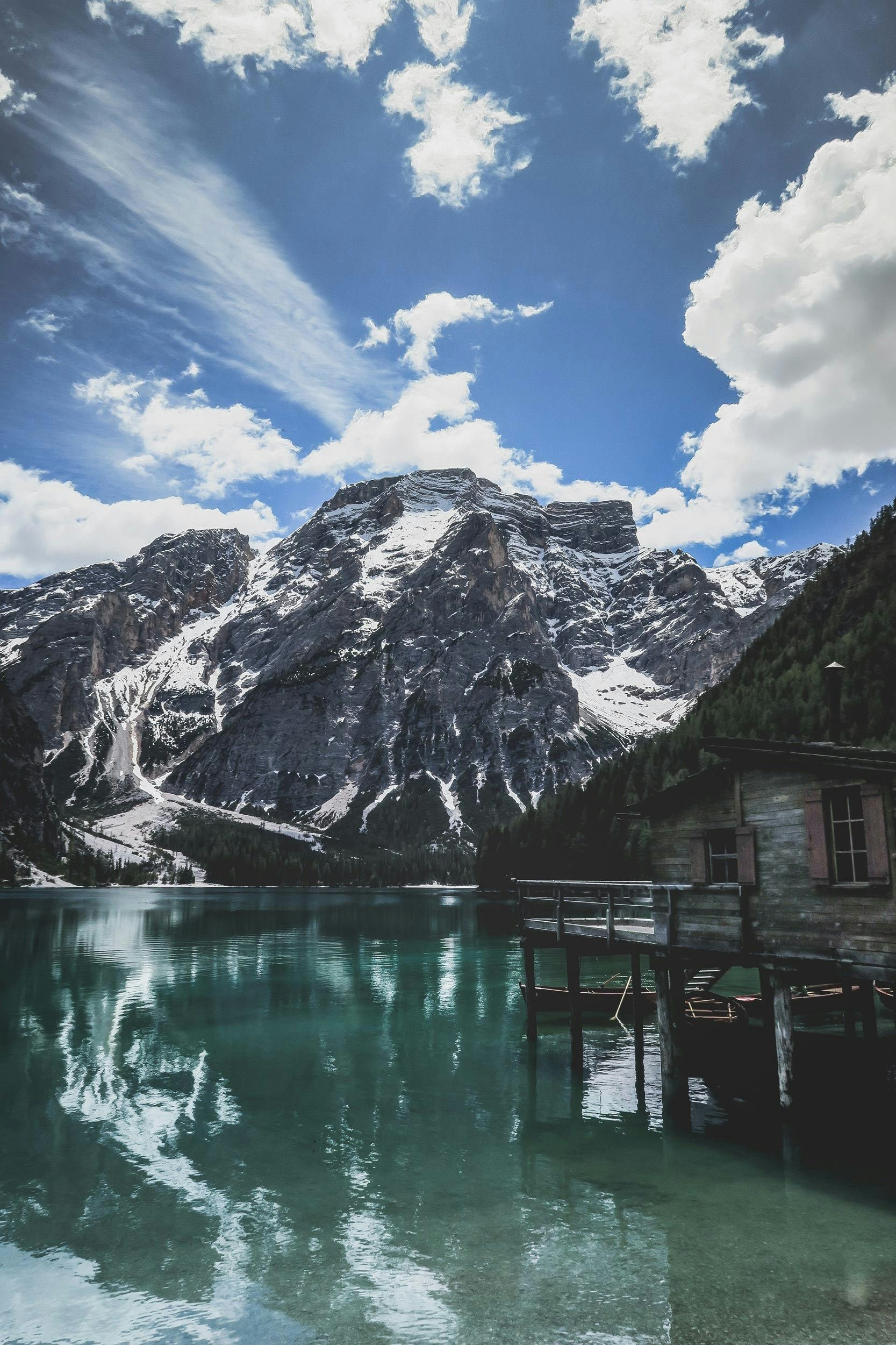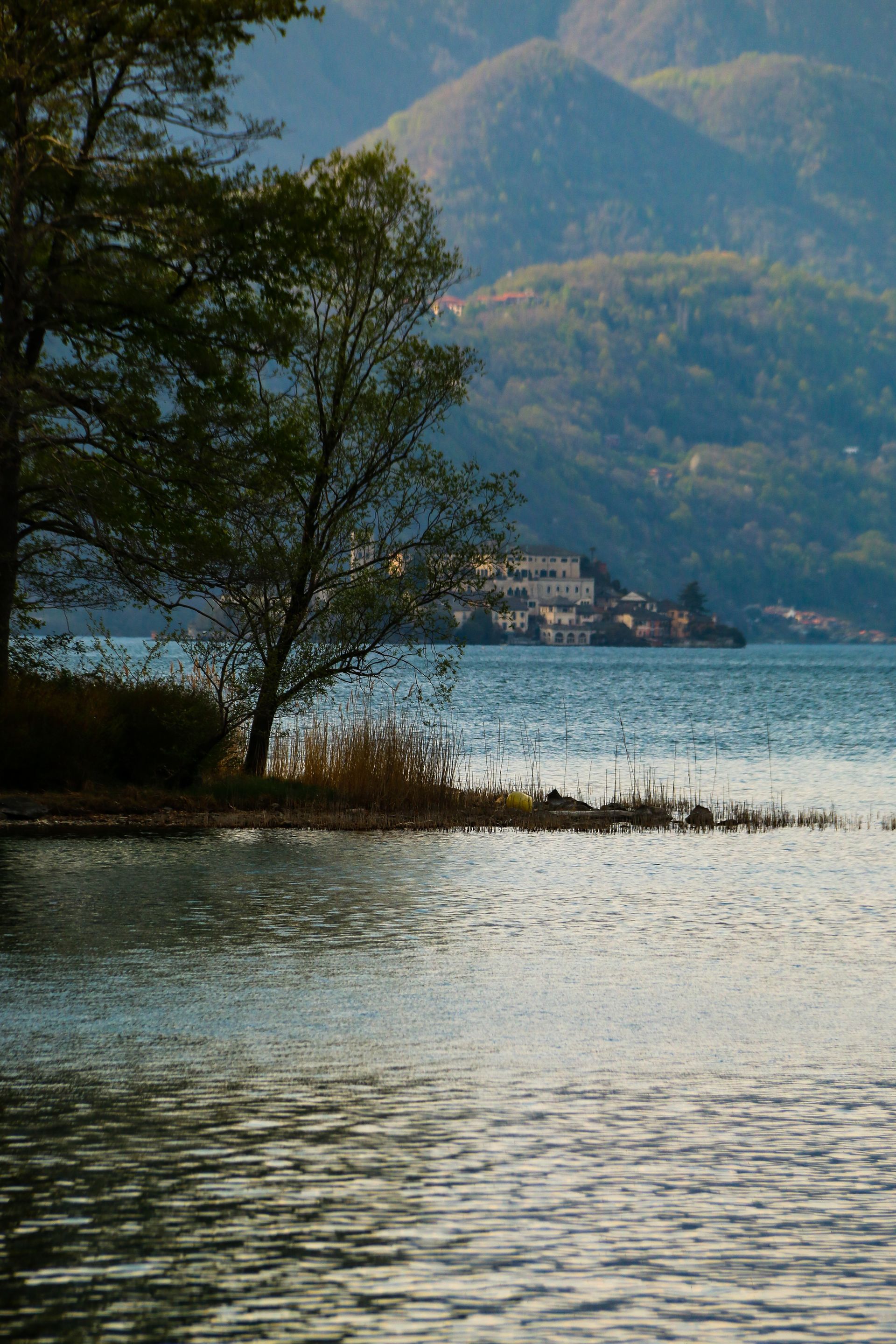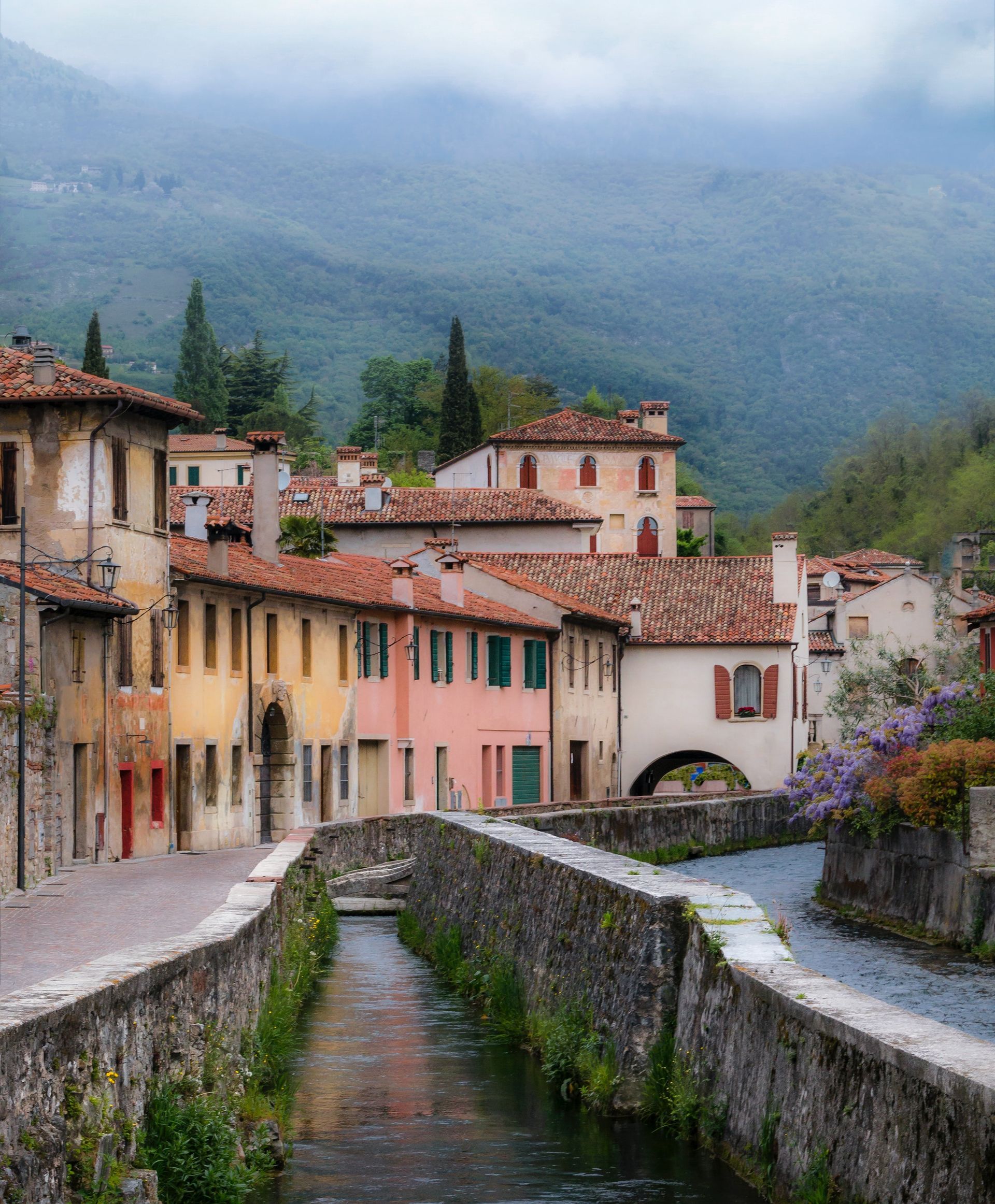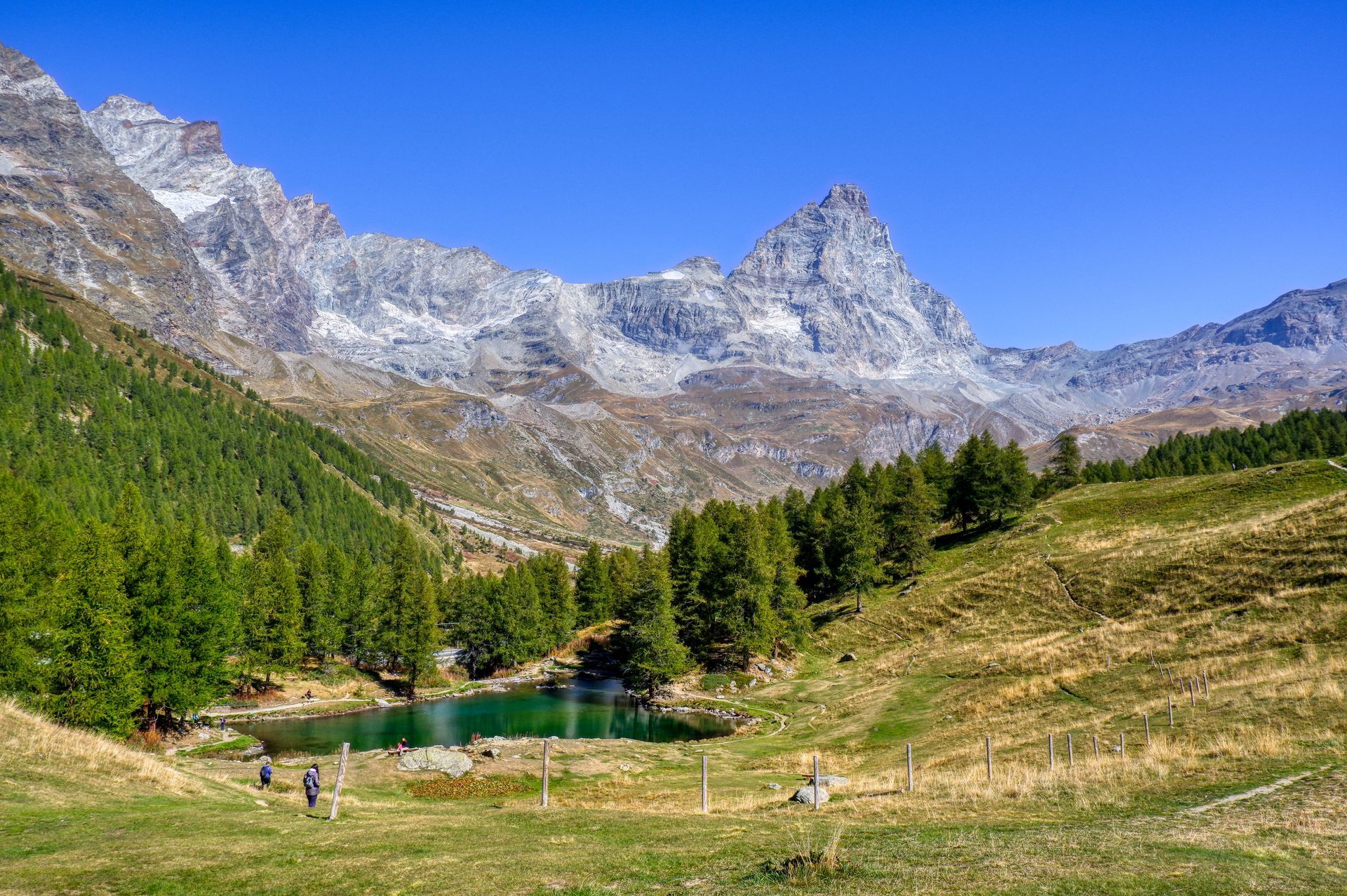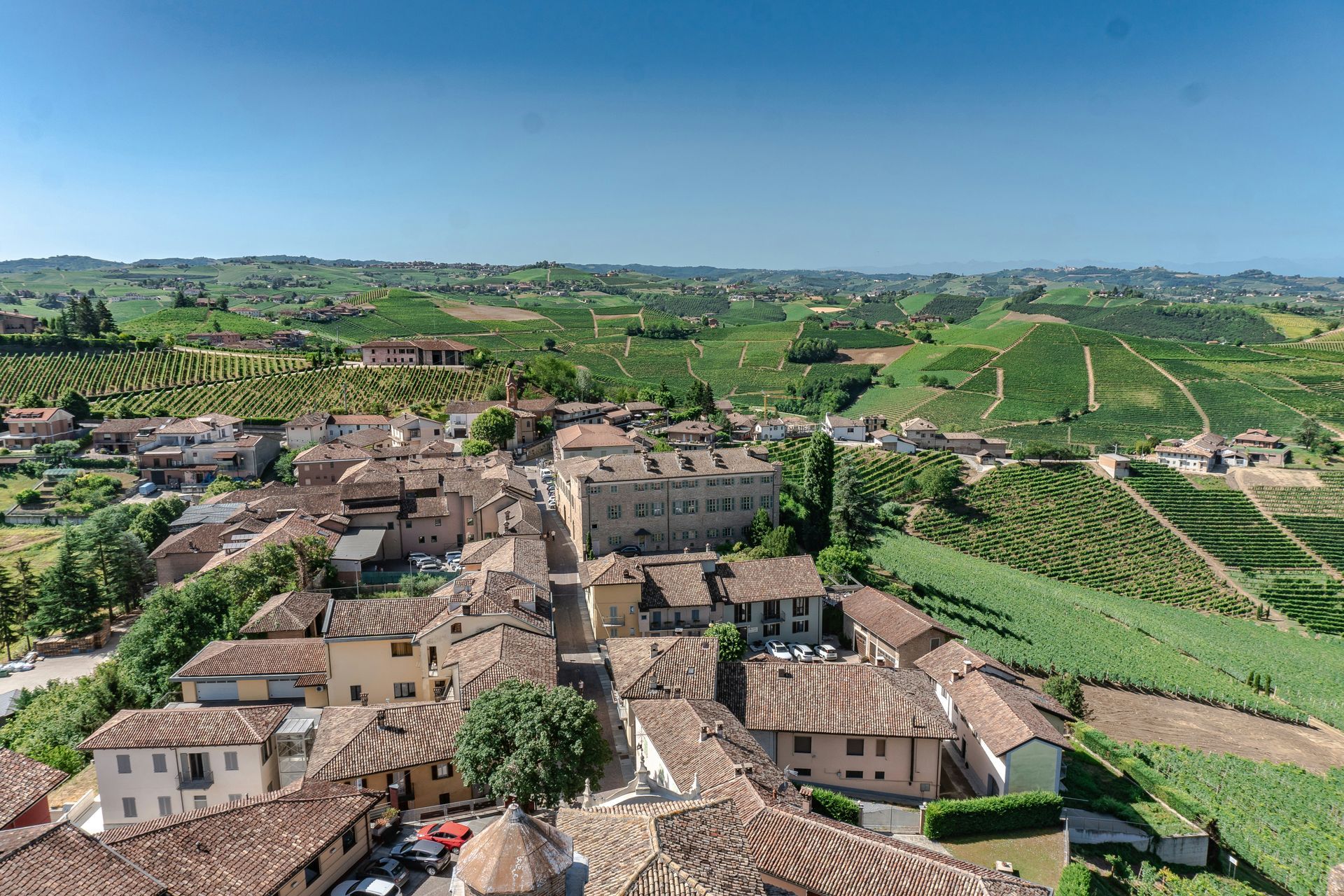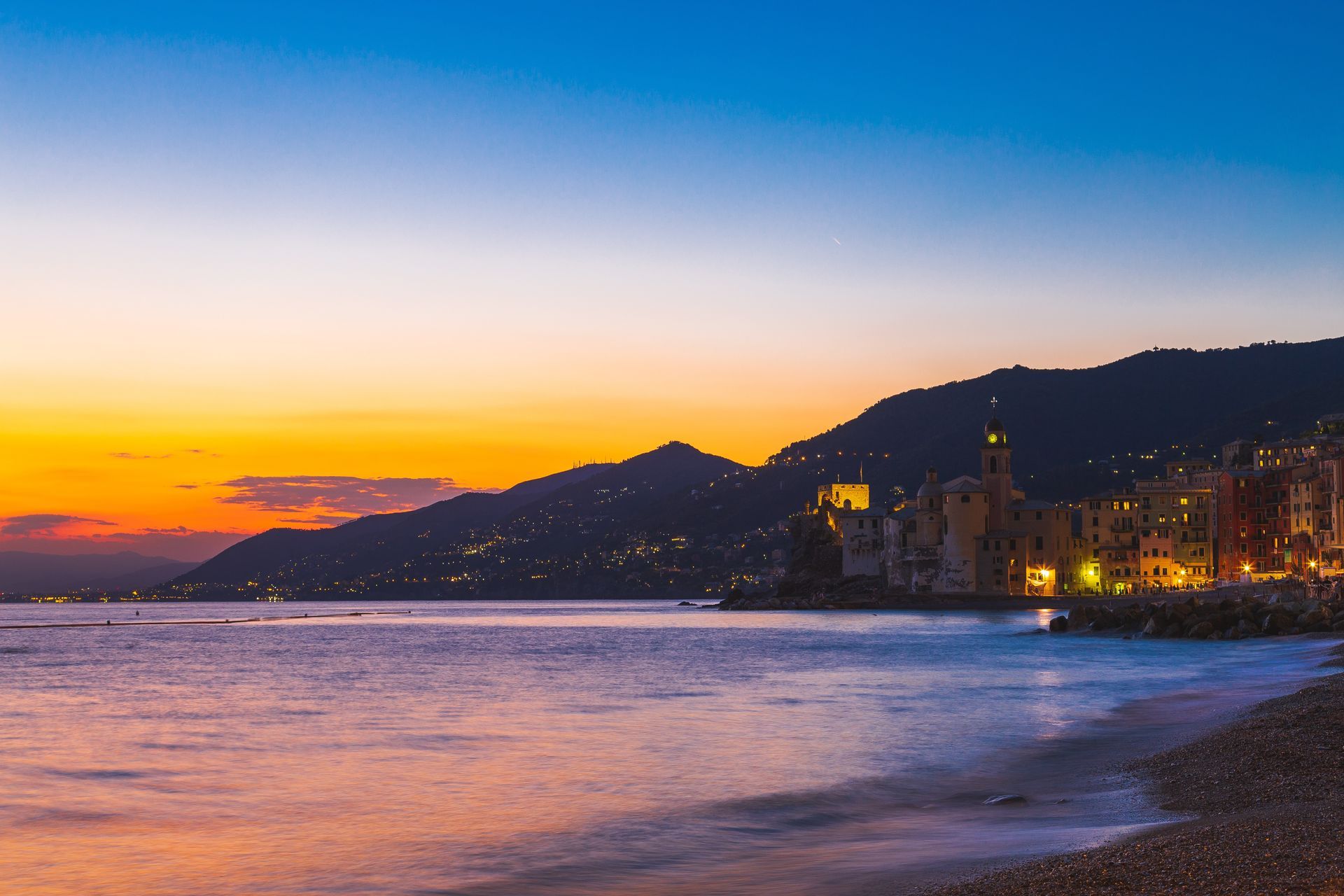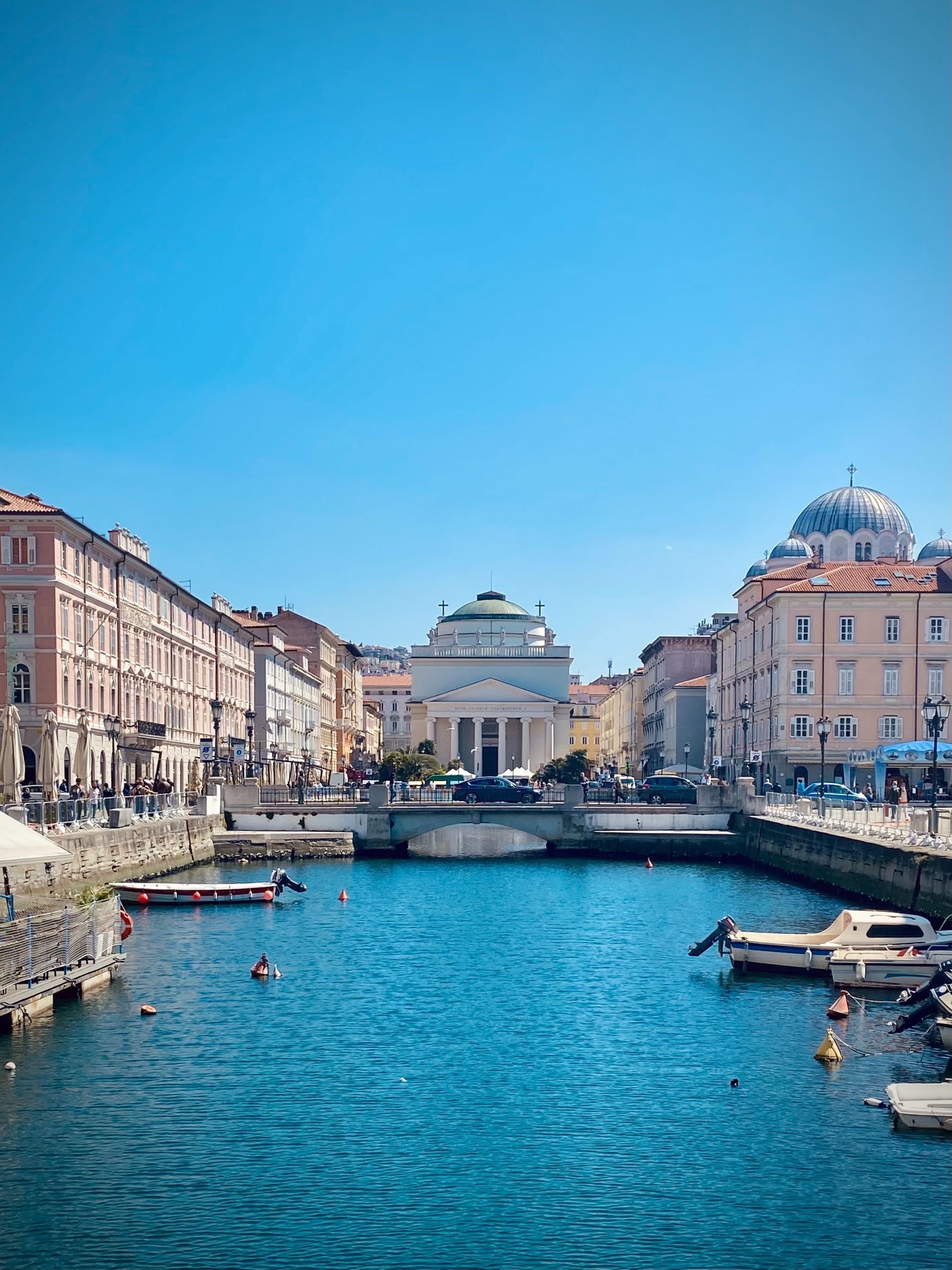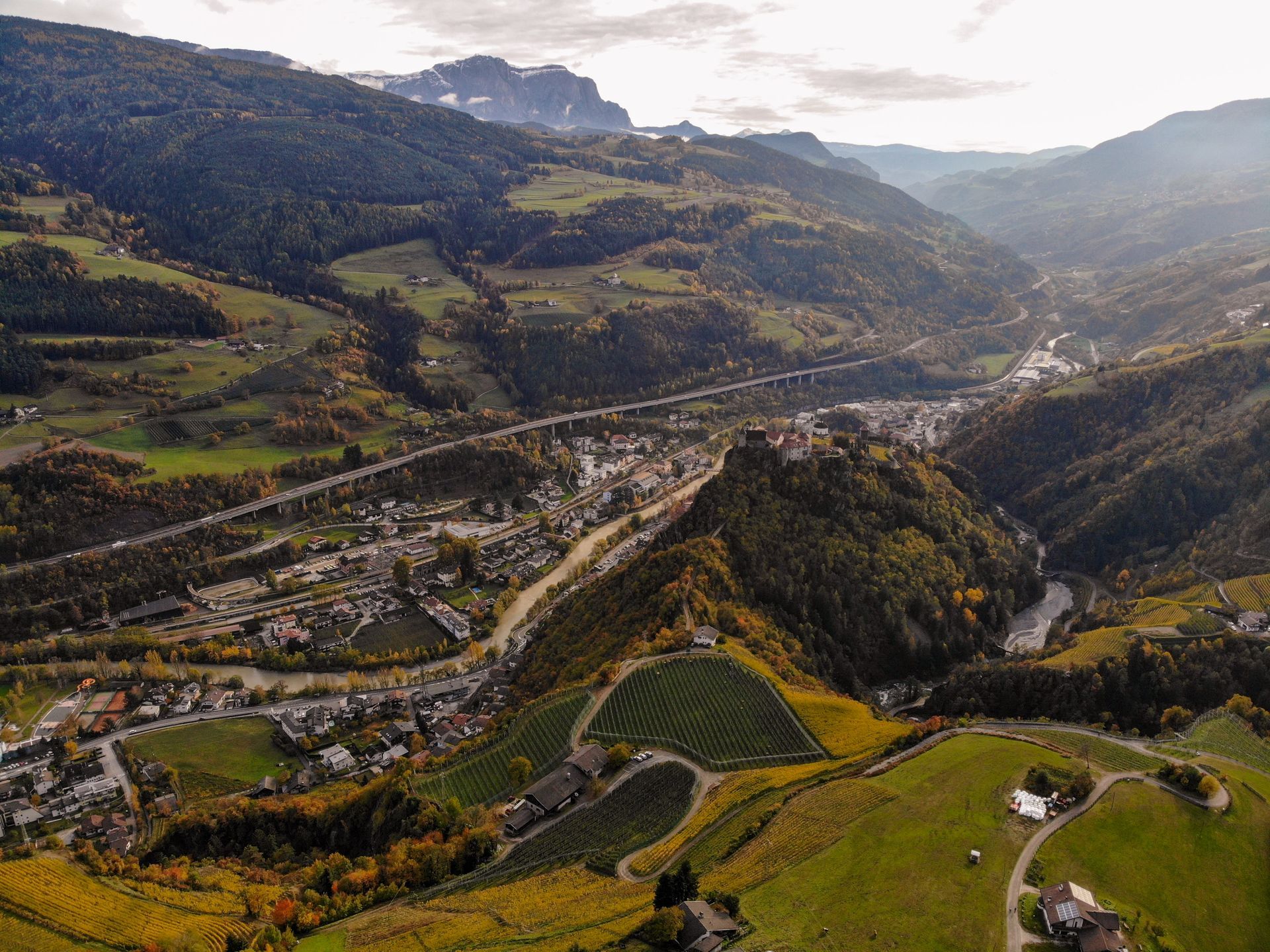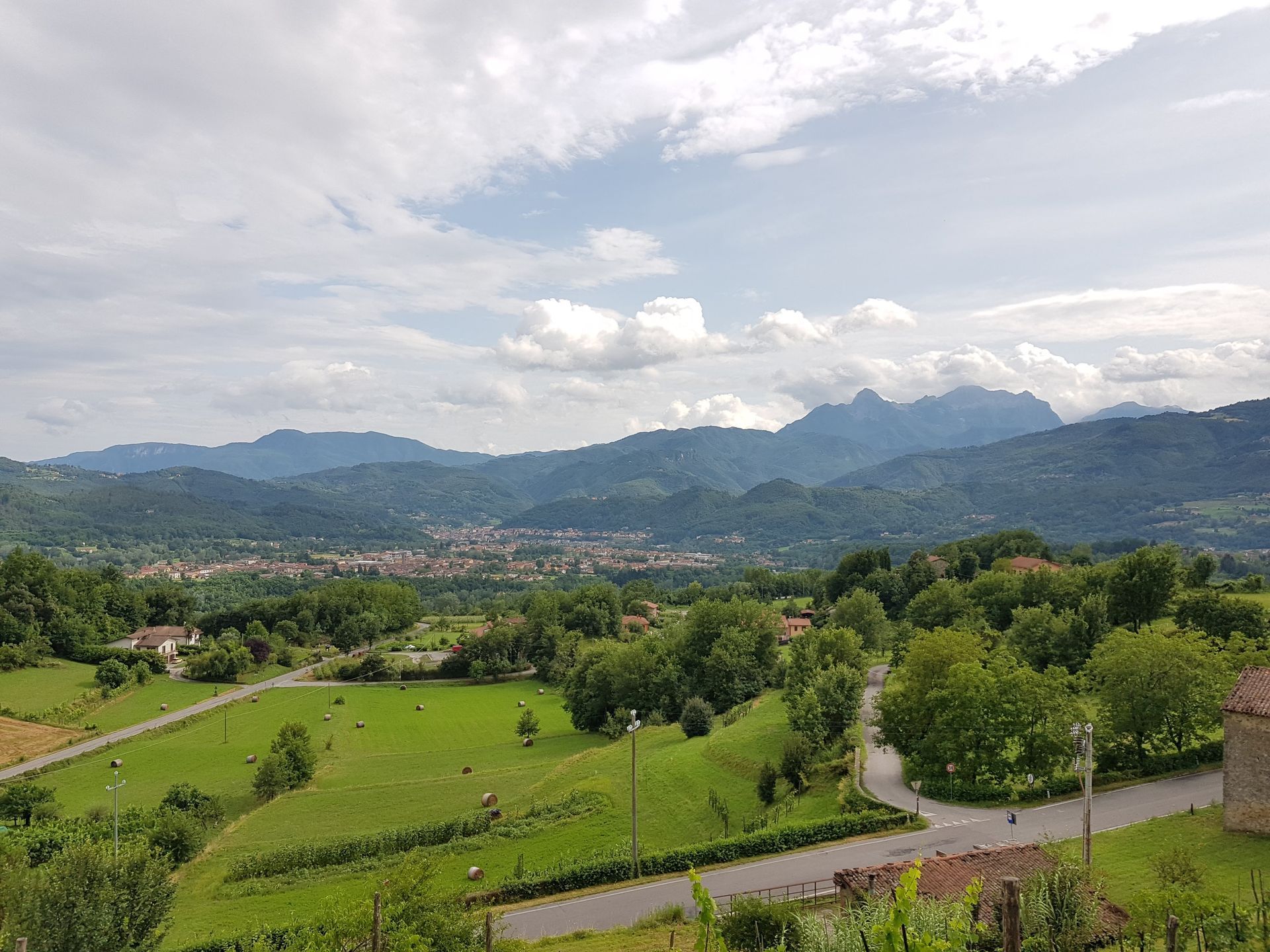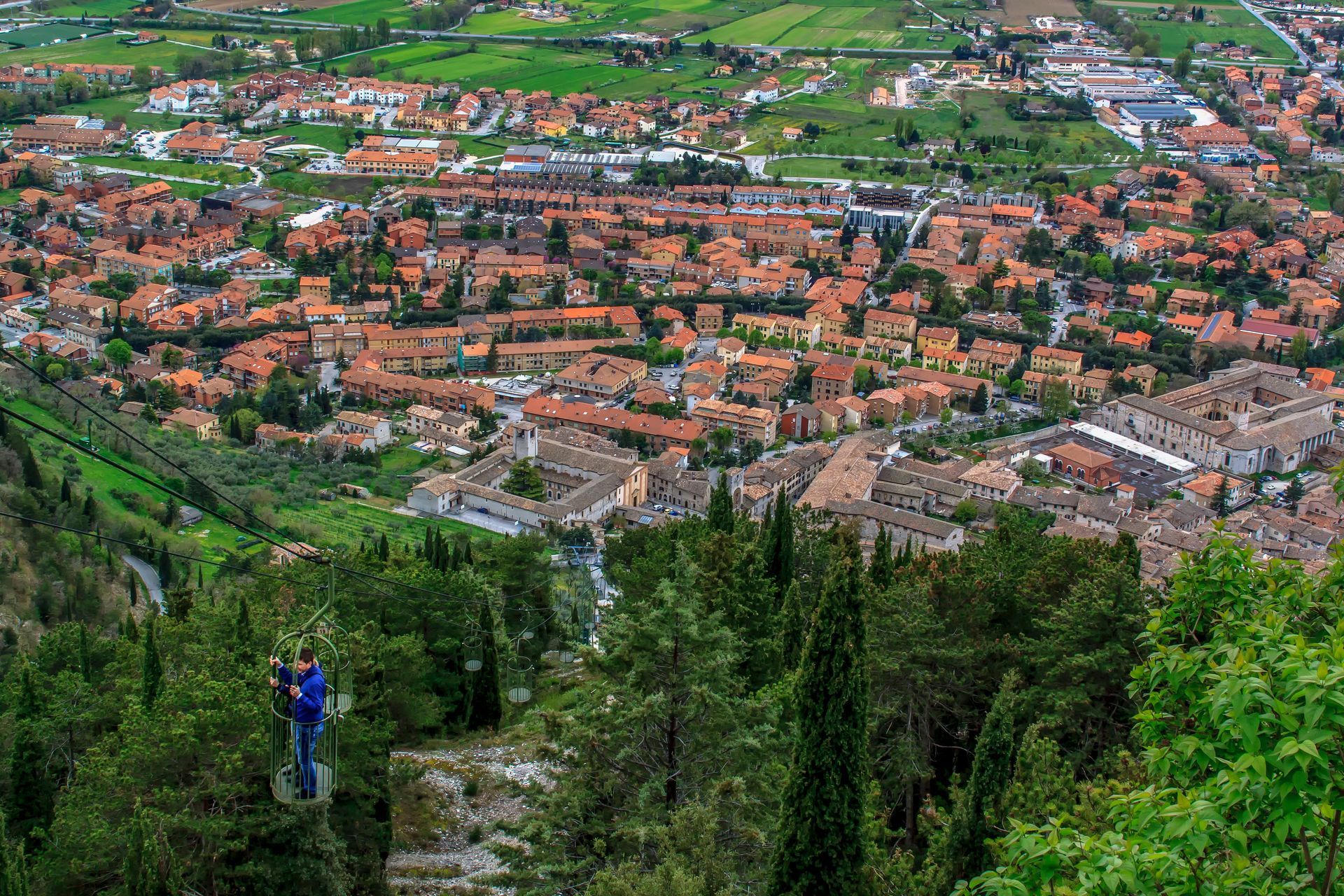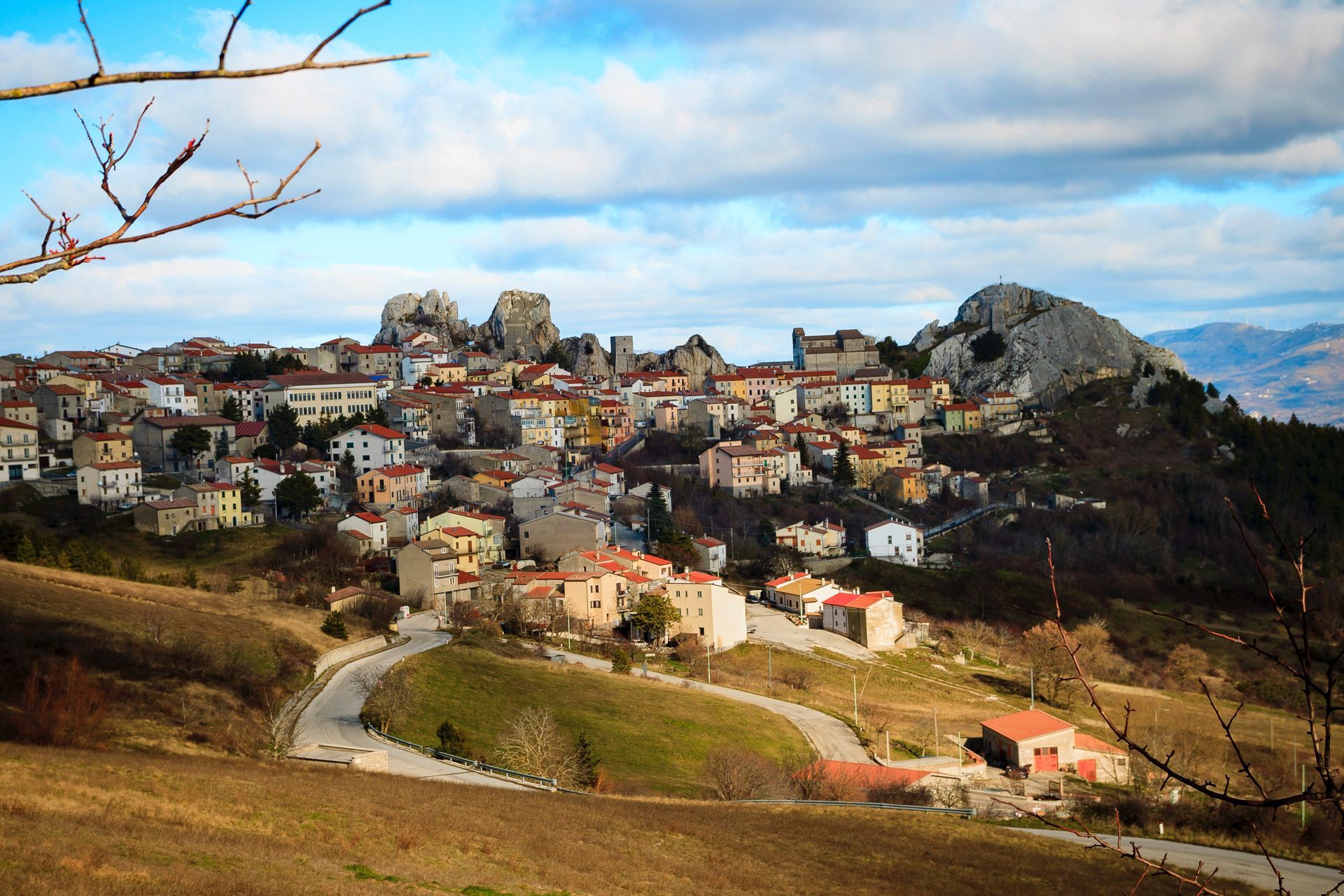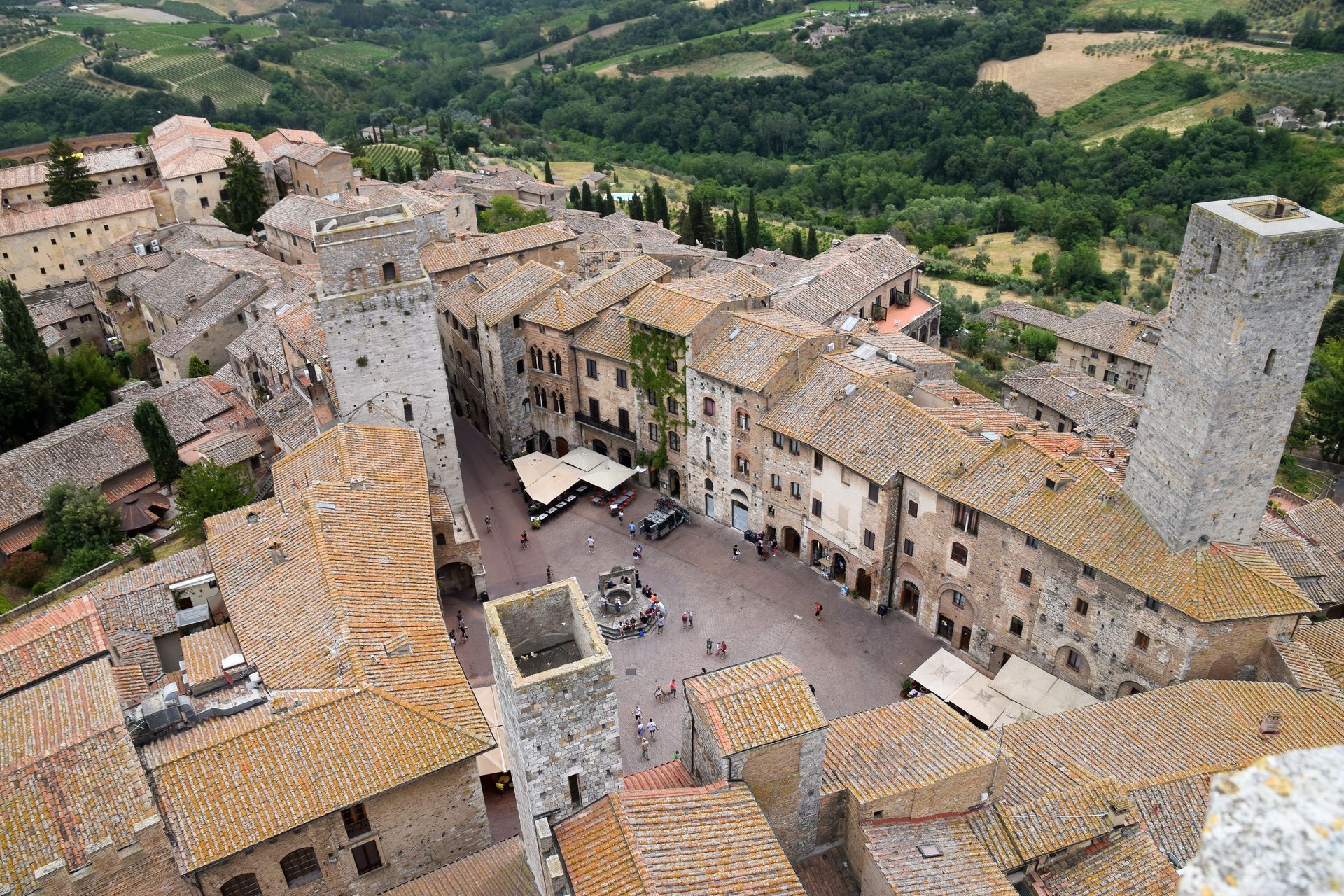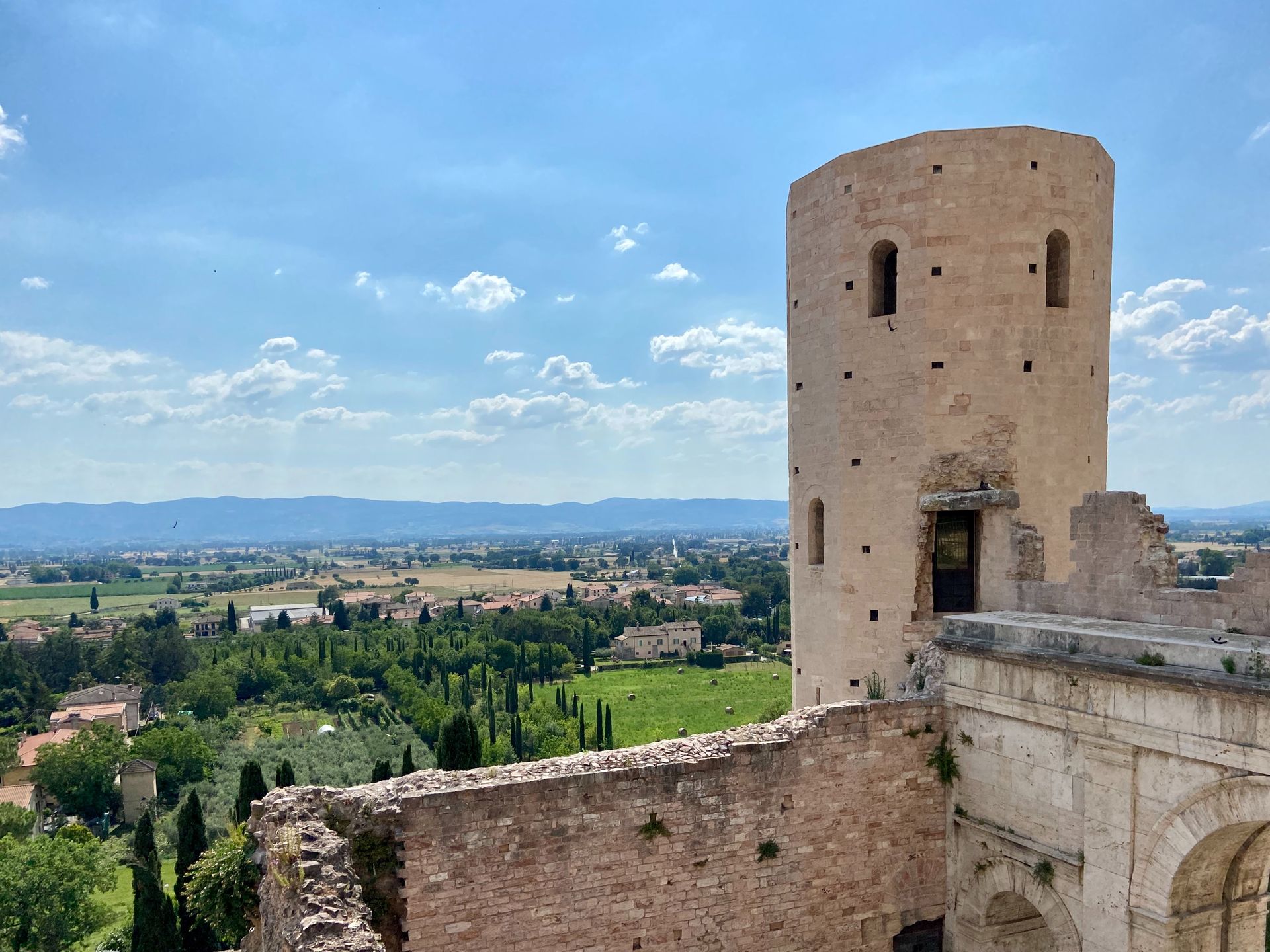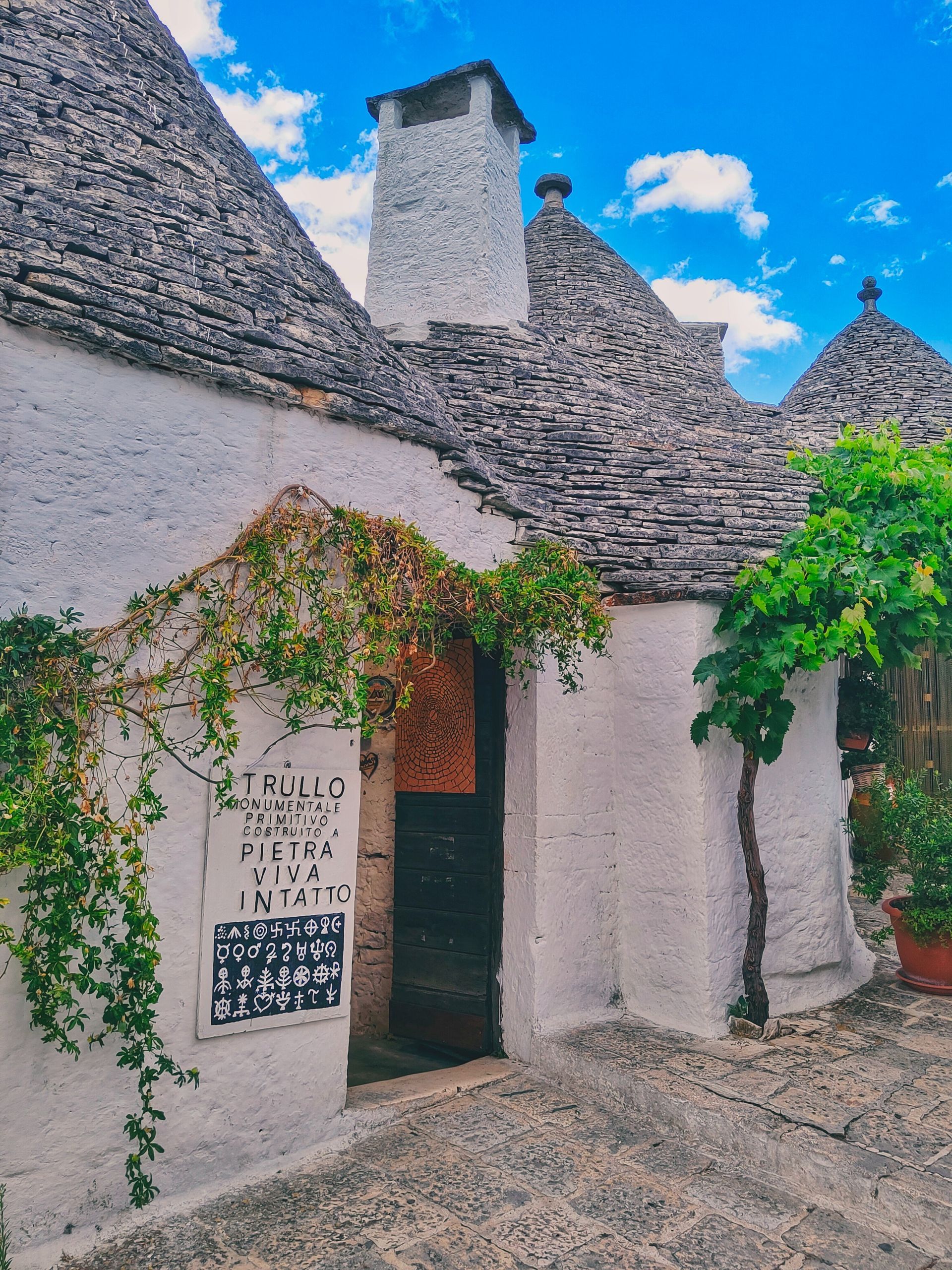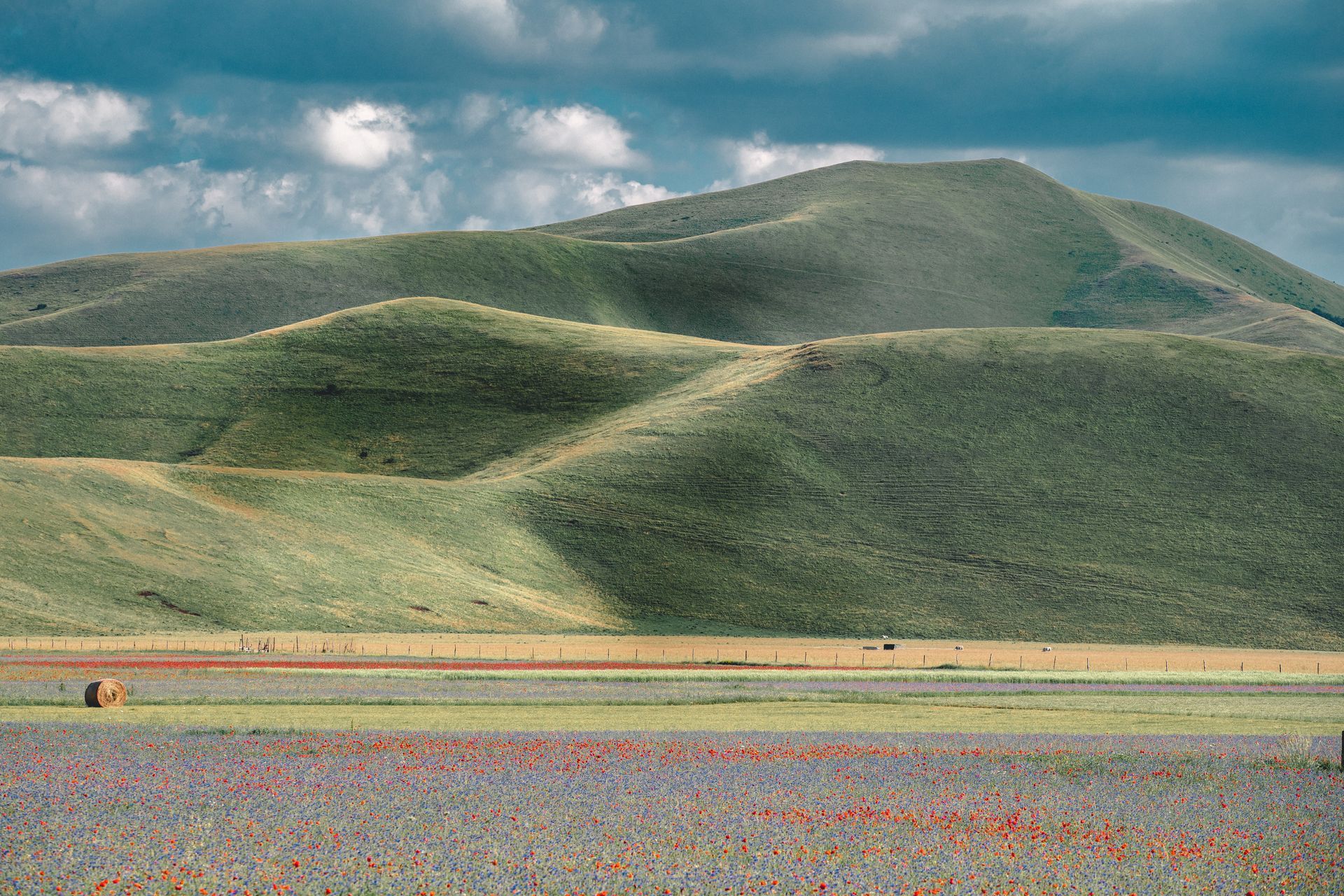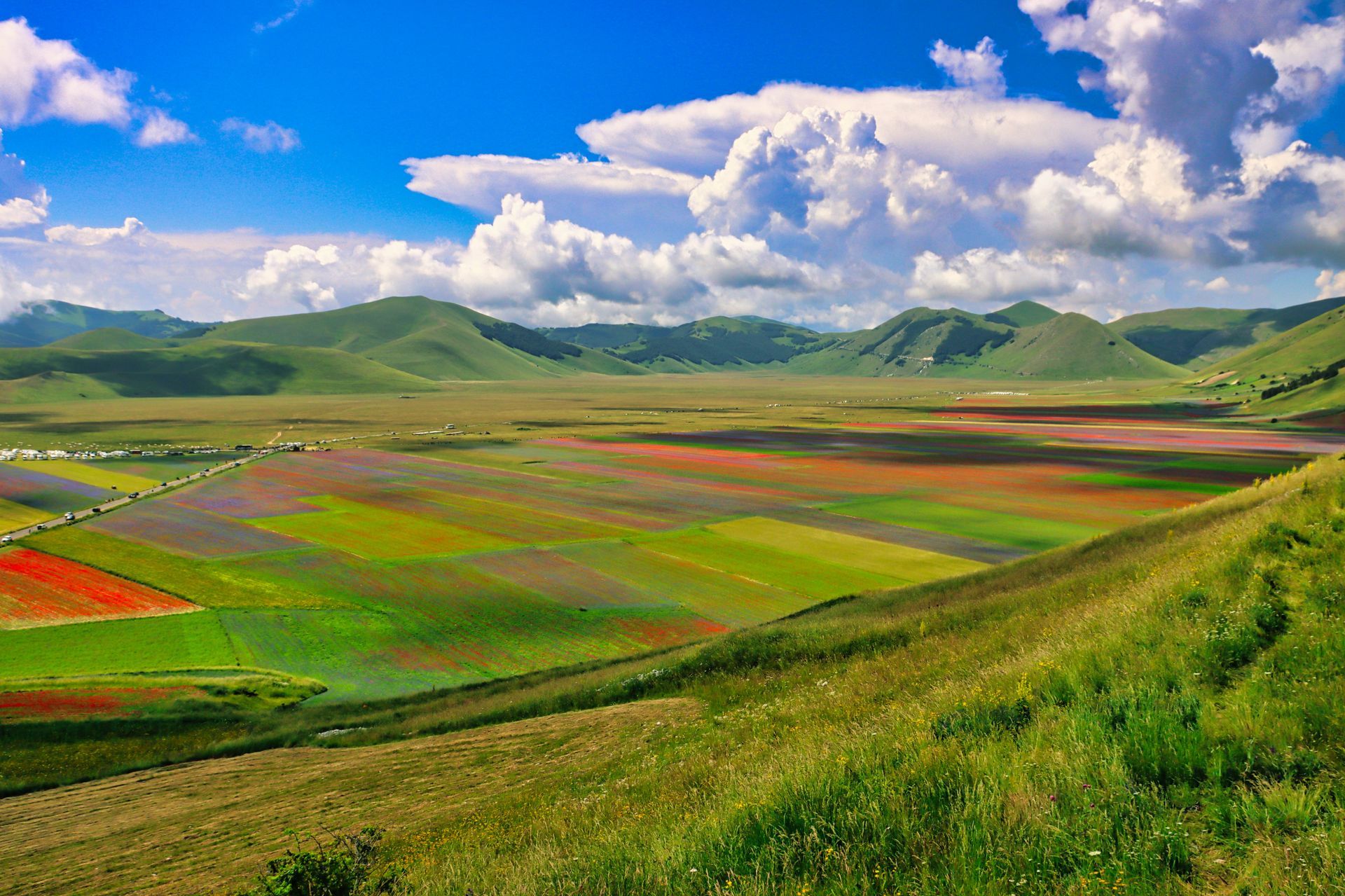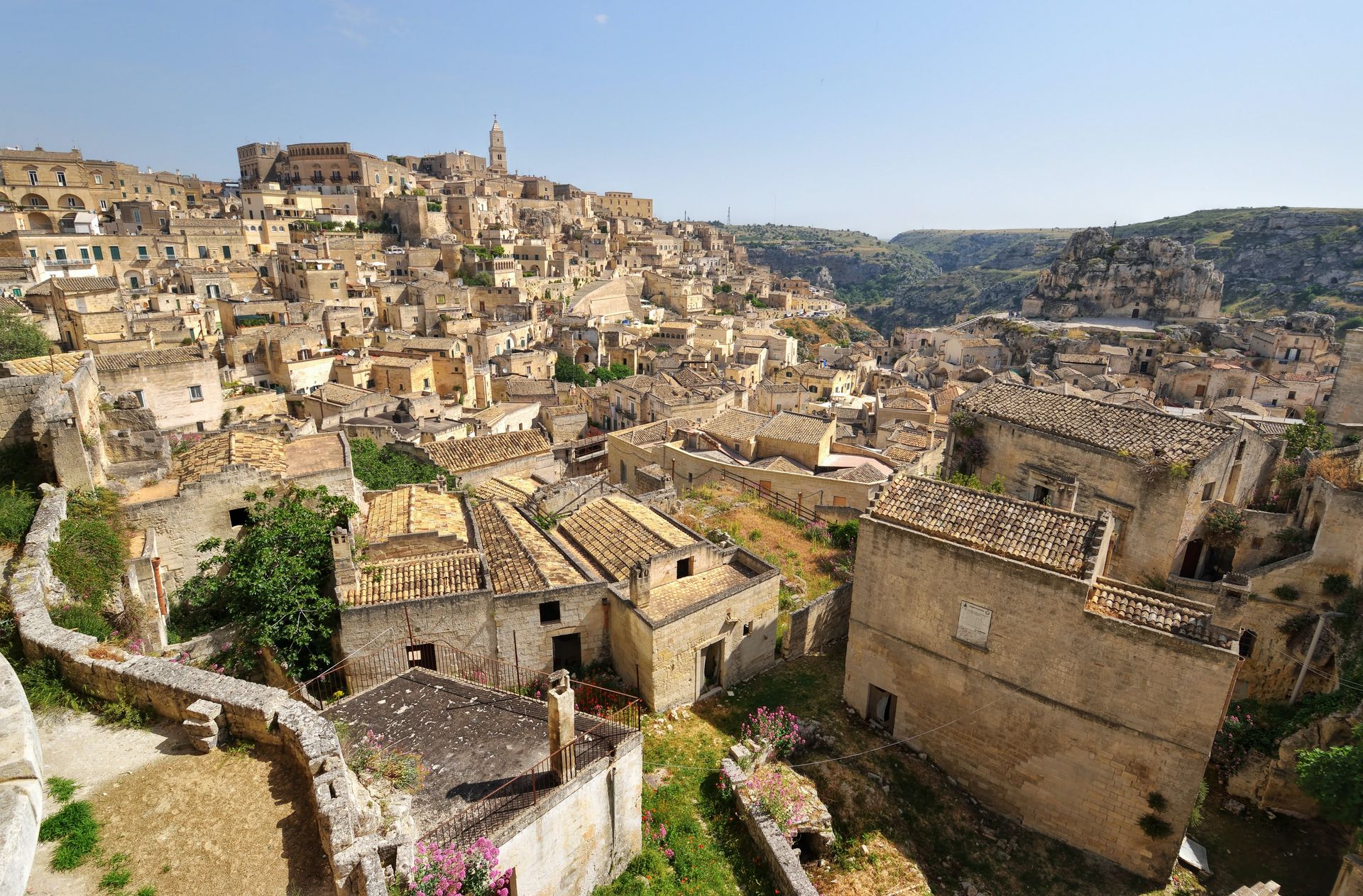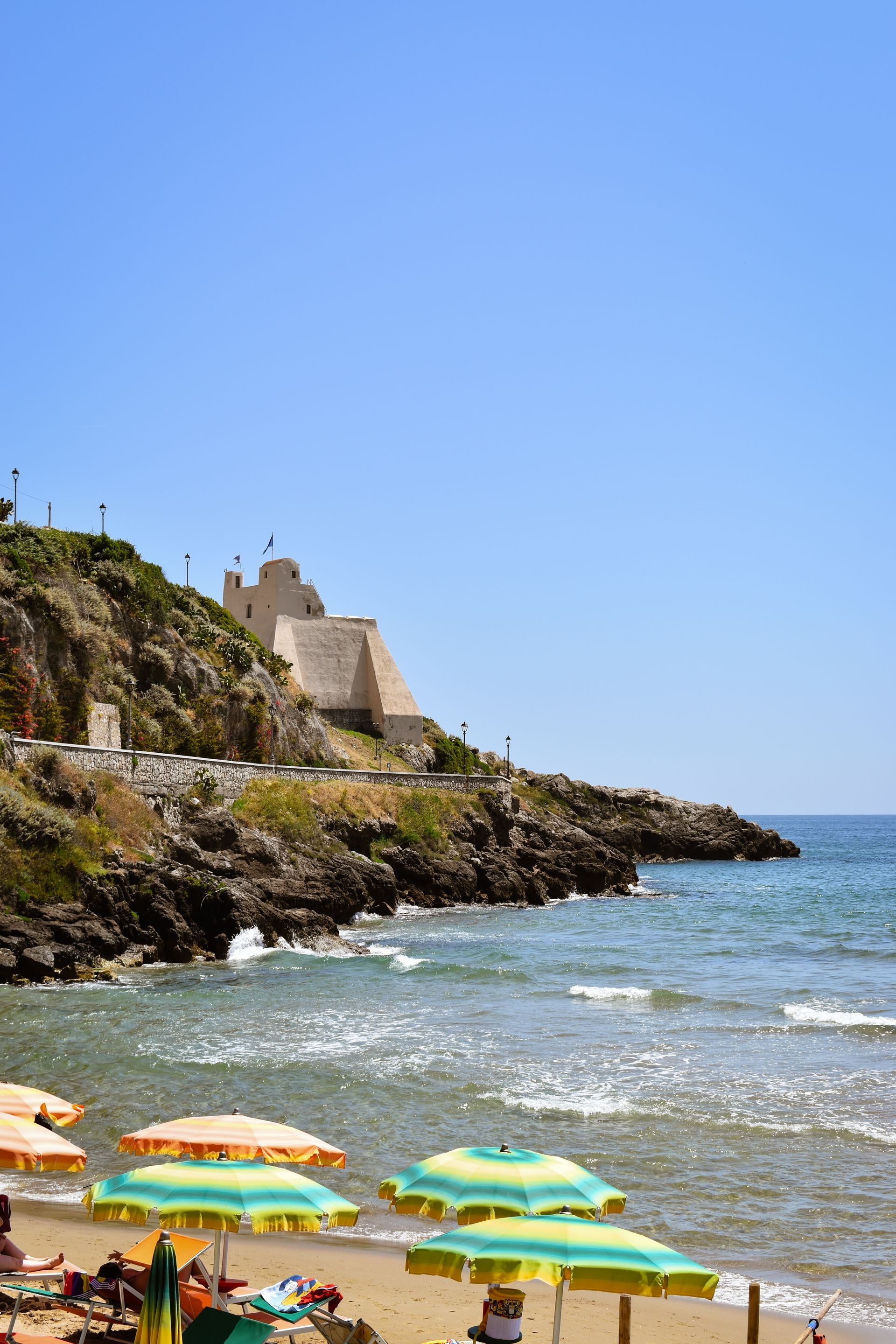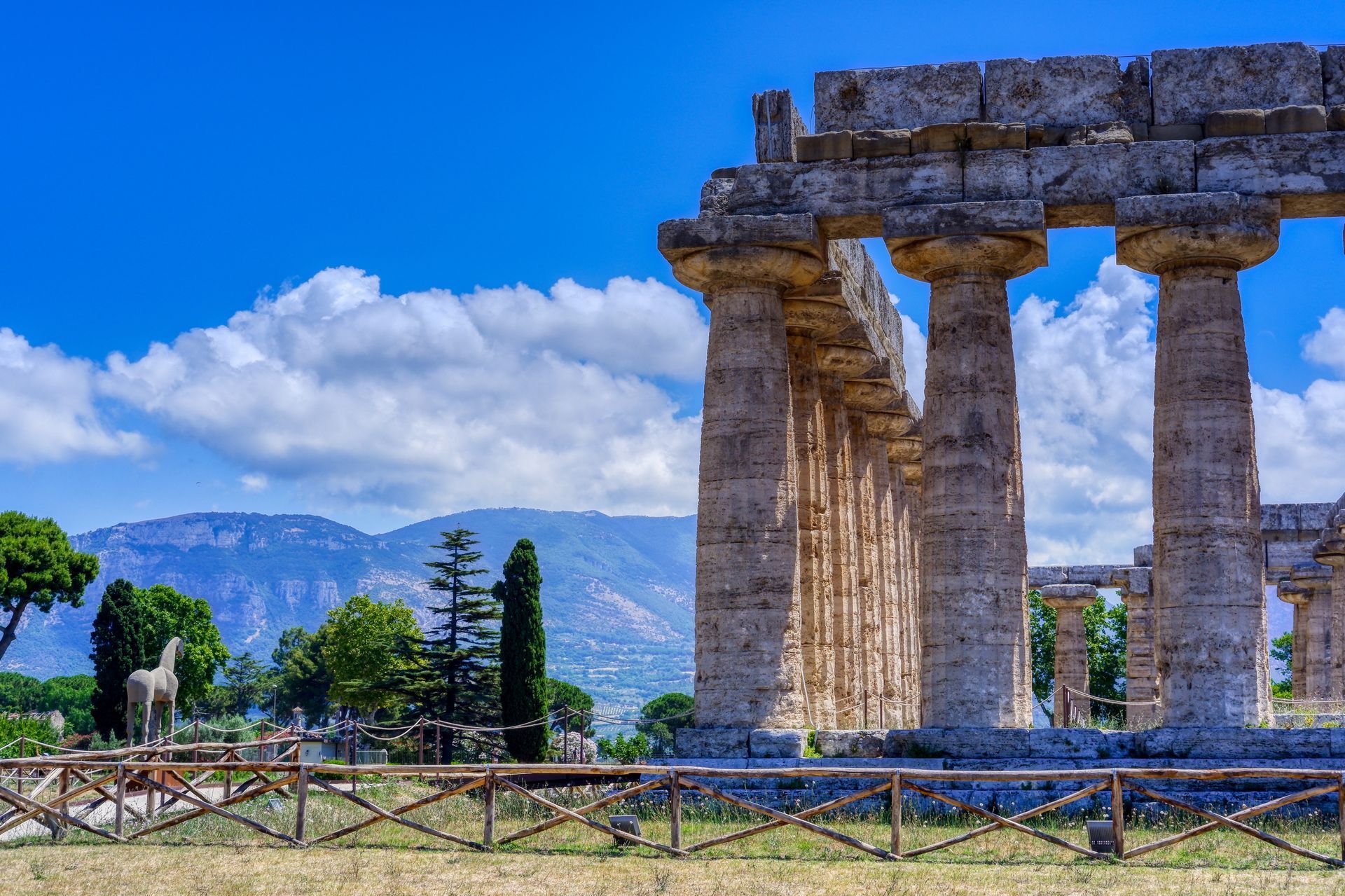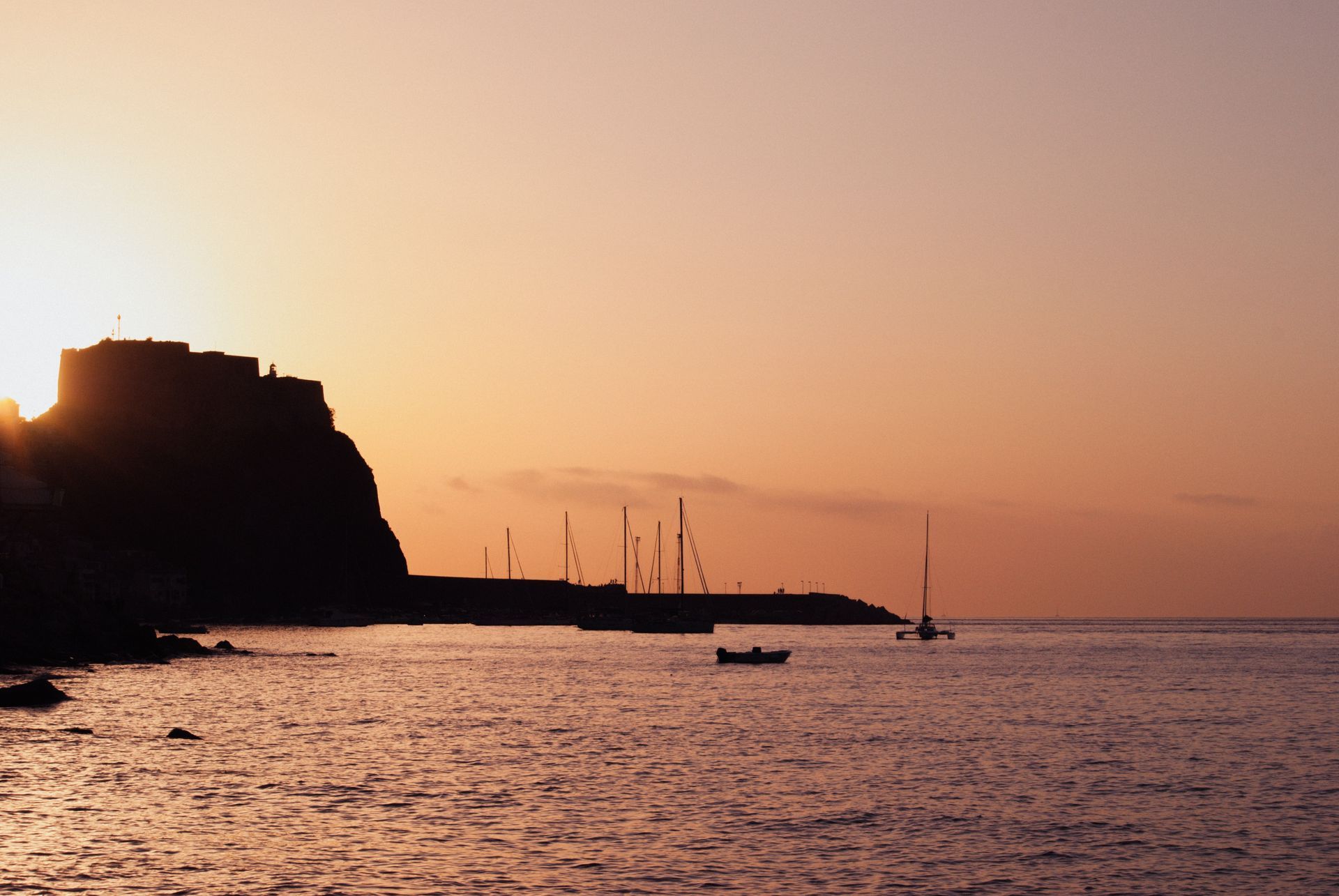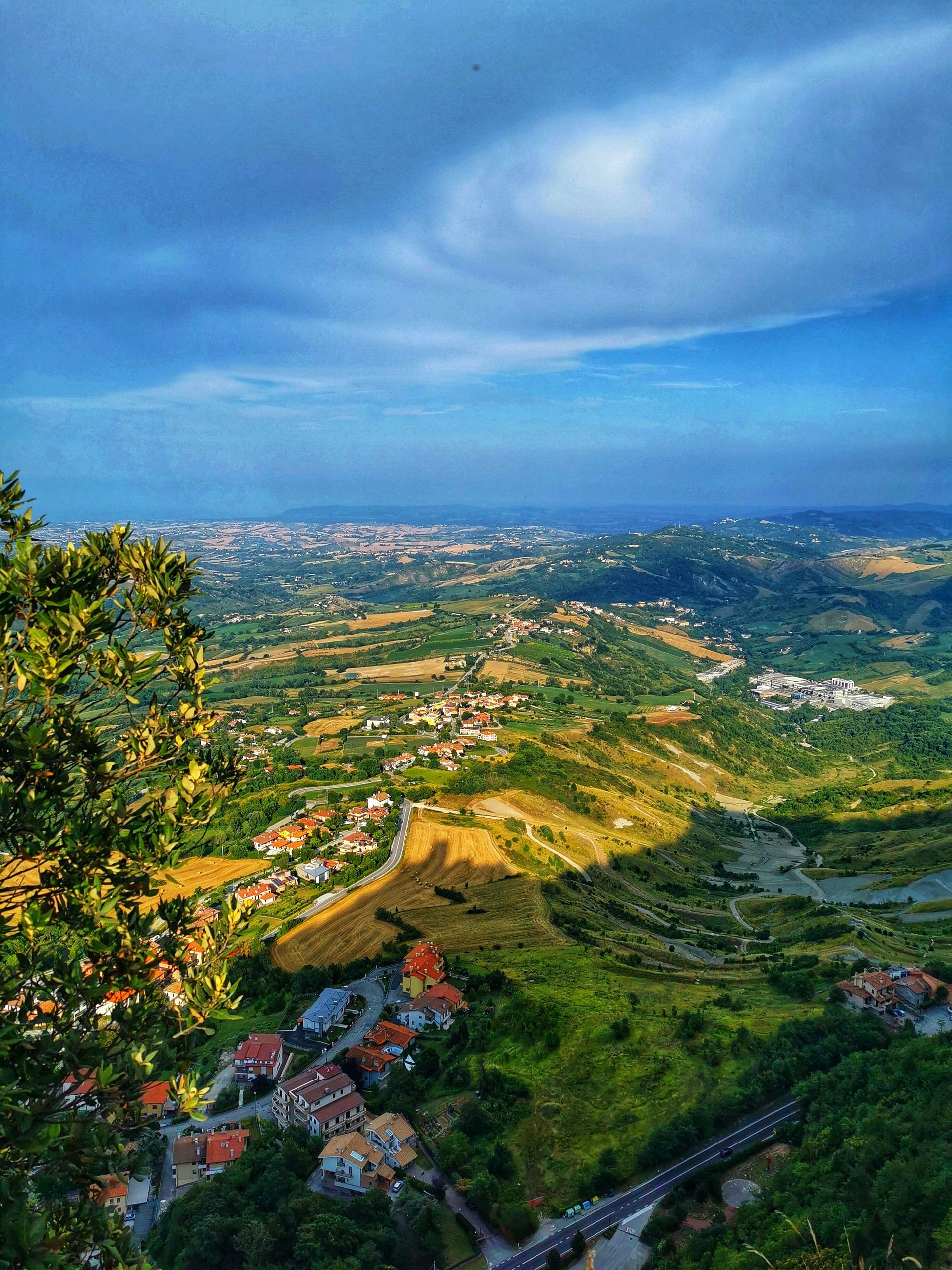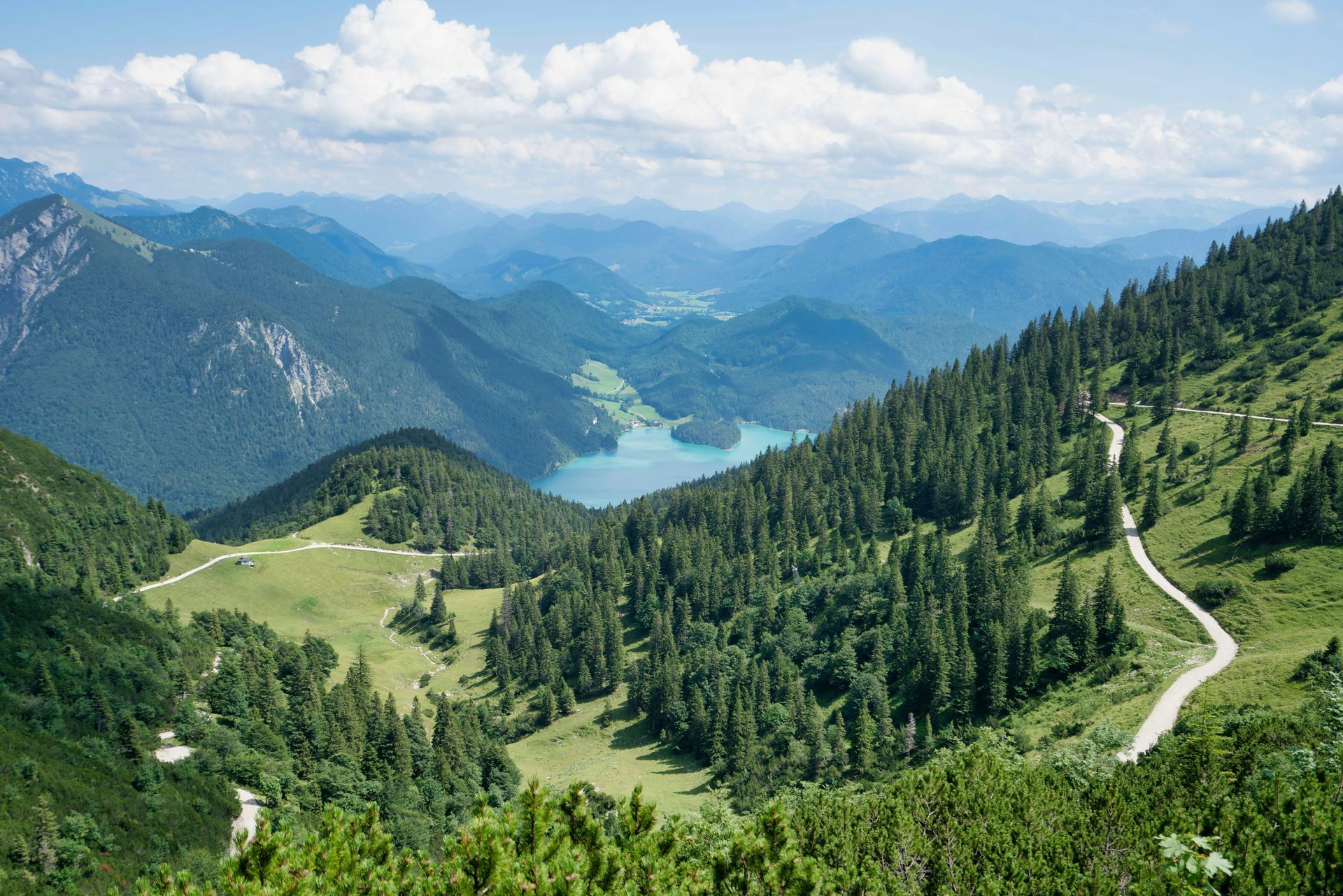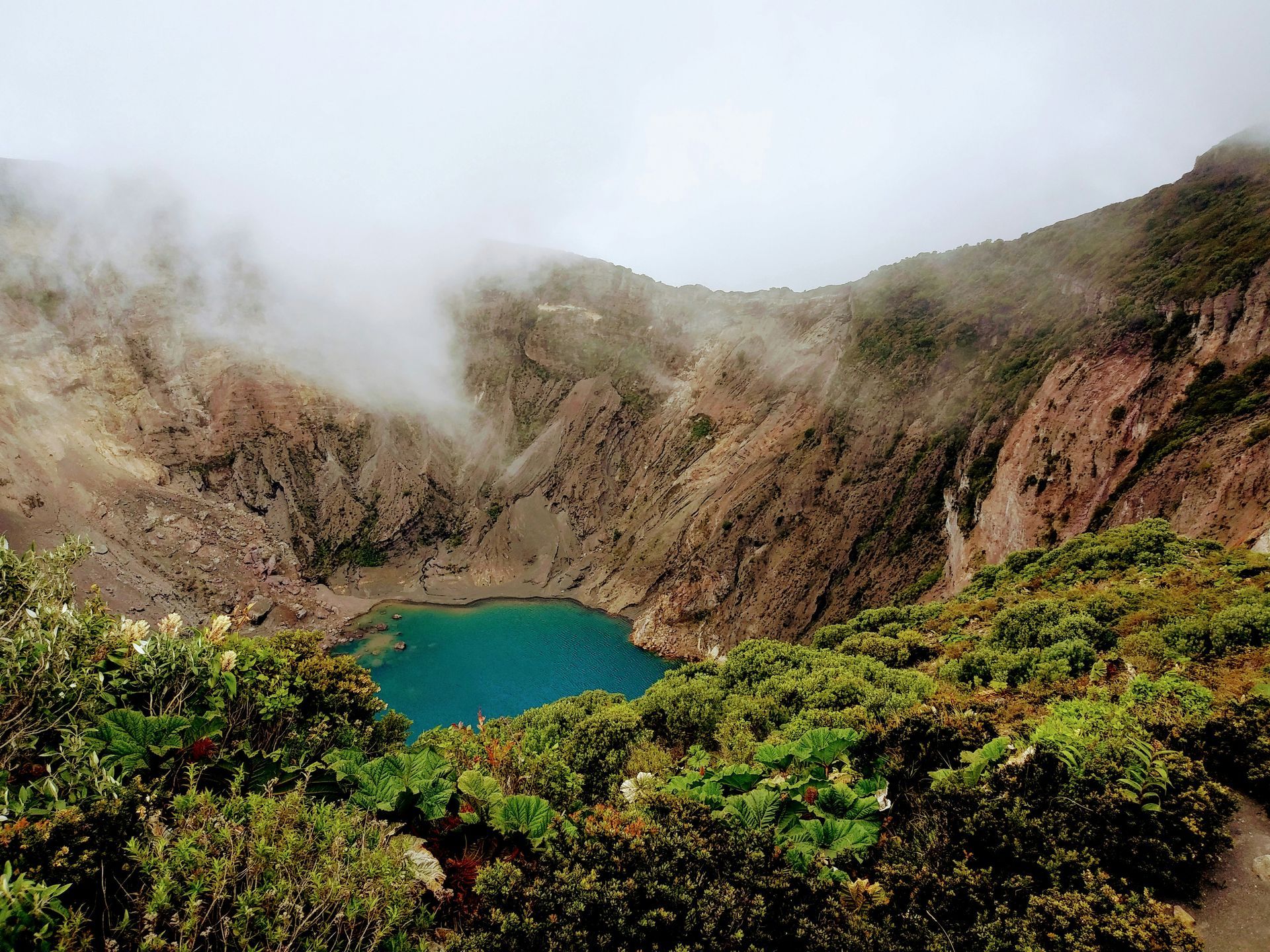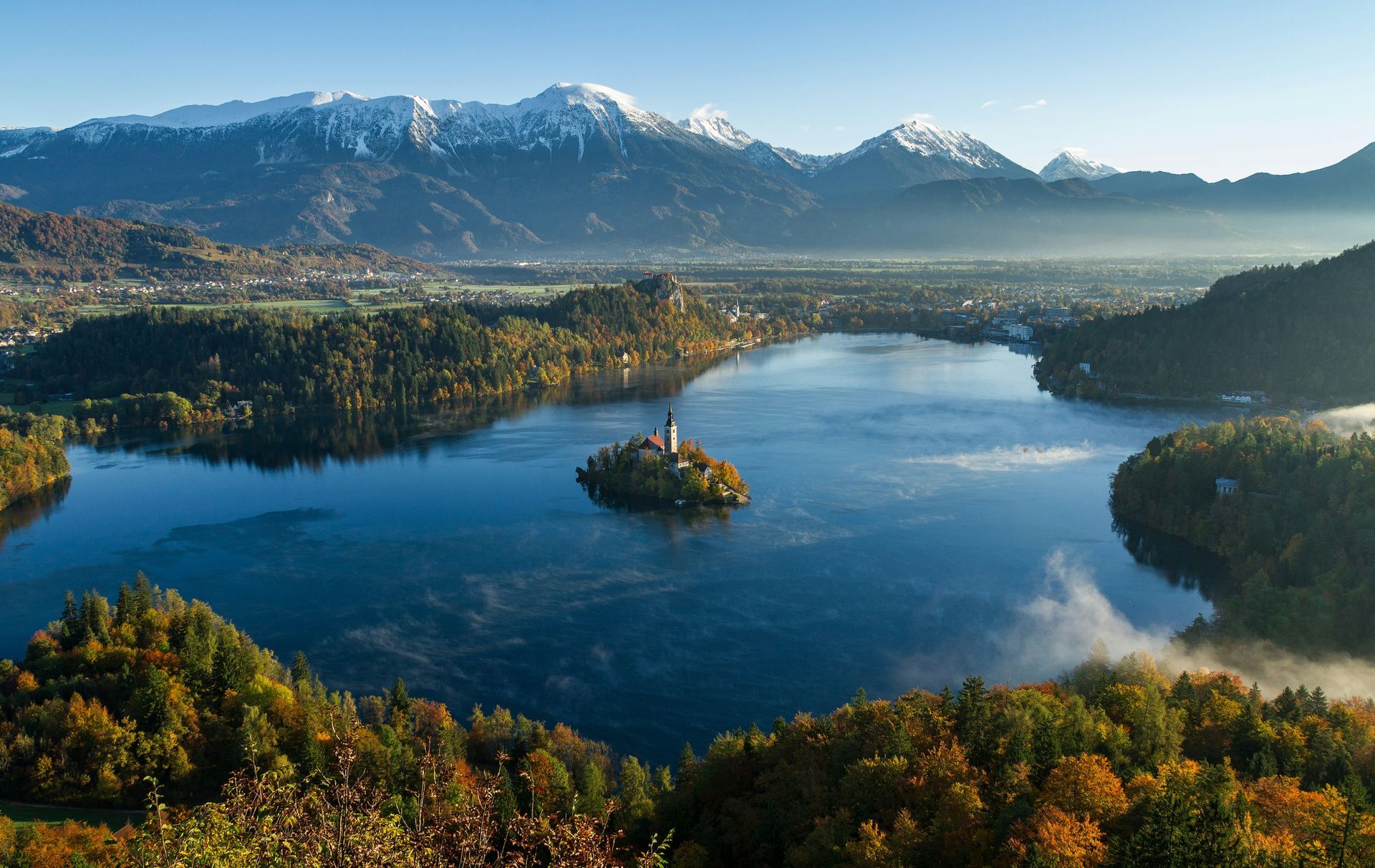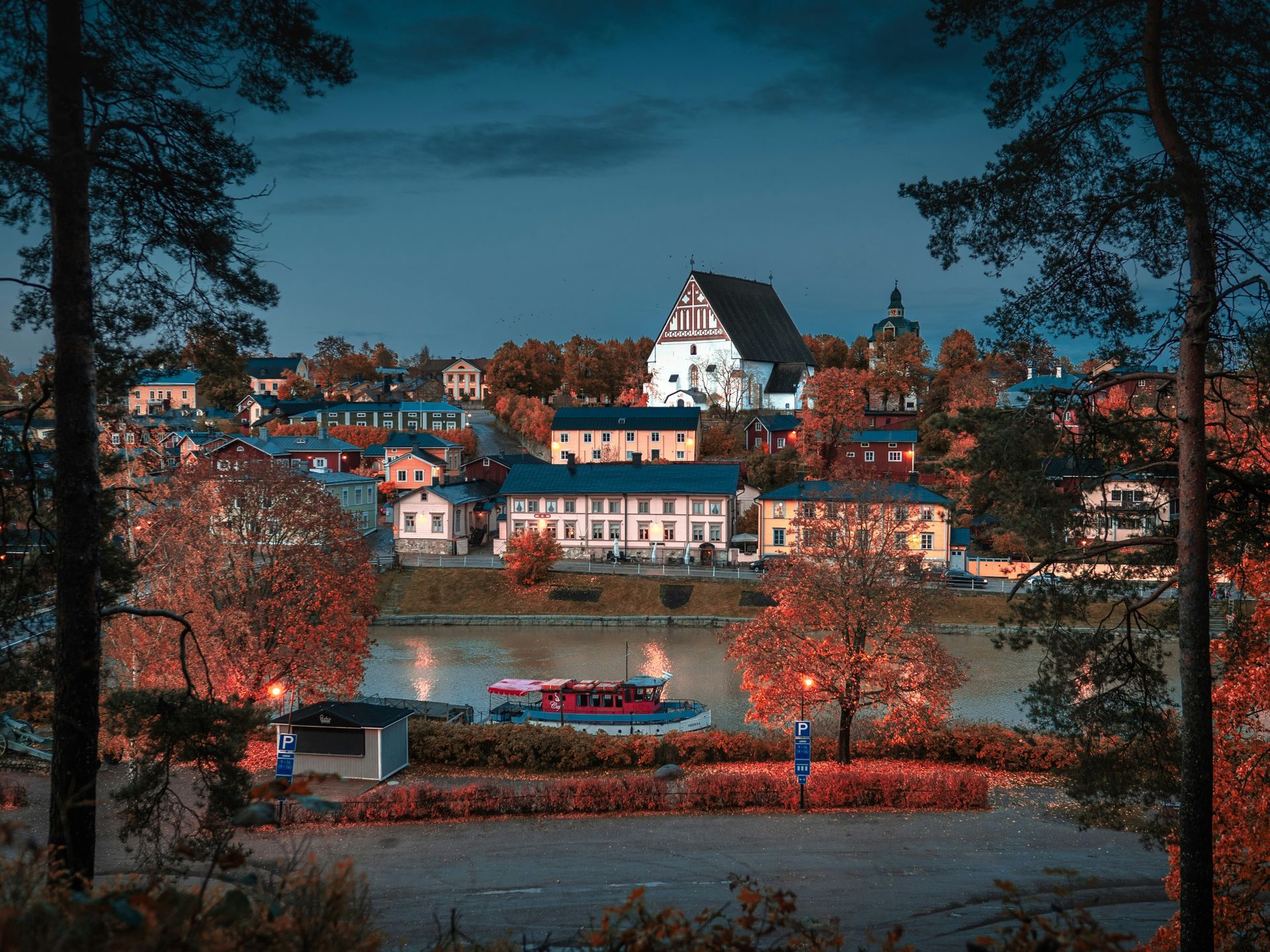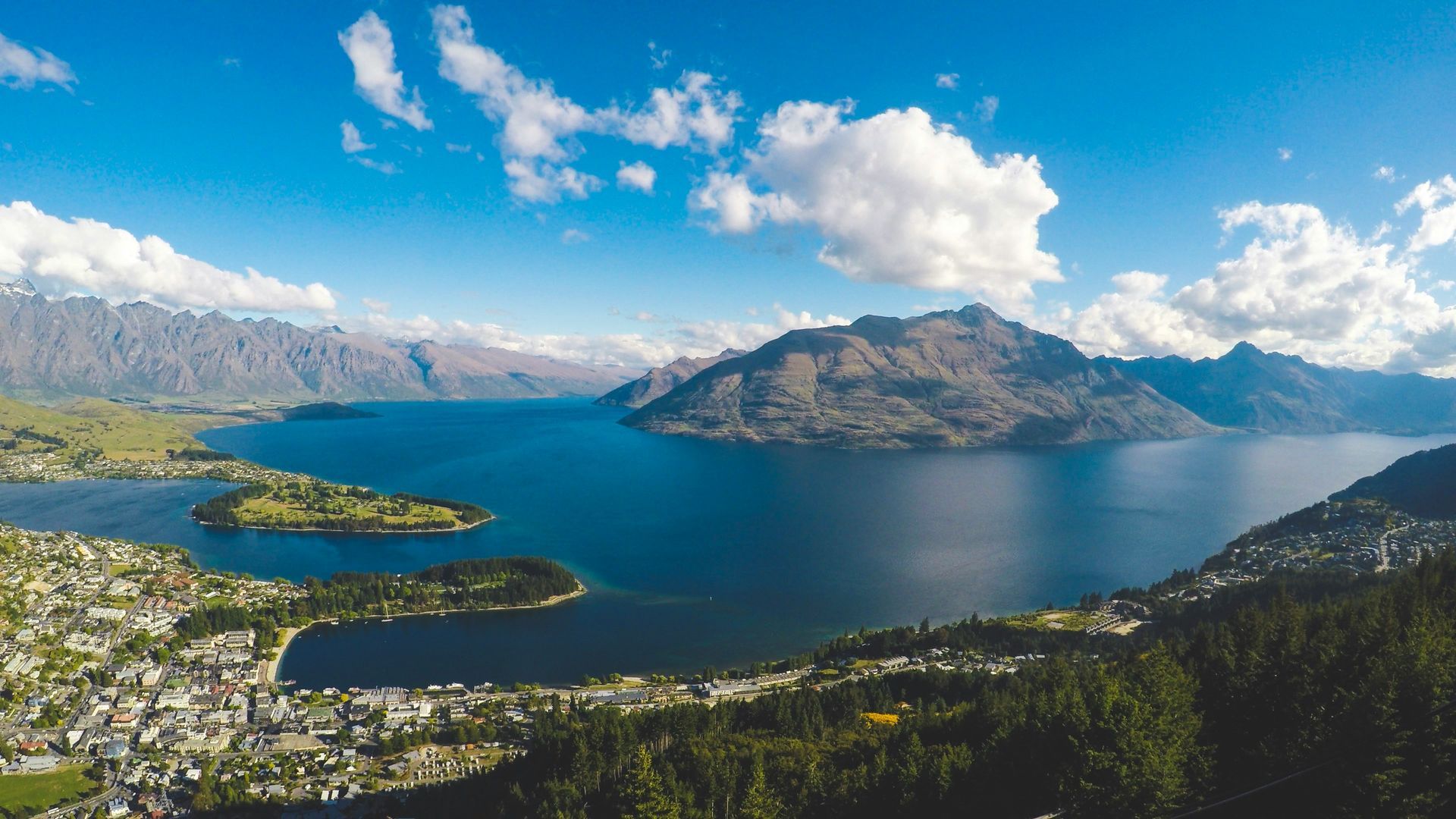Spreading Smile across the globe
Hidden Gems of Northern Italy
Hidden Gems of Italy are a testament to the country's diverse and enchanting beauty, often concealed from the traditional tourist routes. While Italy is celebrated for its iconic cities like Rome, Florence, Venice, and the Amalfi and Cinque Terre coasts, it's the lesser-known destinations that promise a unique journey. These unexplored regions offer travellers a chance to experience Italy's authentic culinary delights, rich historical narratives, and stunning natural landscapes. From the northern reaches to the southern shores, these Hidden Gems of Italy reveal a different facet of this remarkable nation.
Lake Orta - Piedmont
Hidden Gems of Italy come to life at Lake Orta, tucked away near the Swiss border in the heart of Piedmont. This hidden paradise often evades the spotlight compared to its more famous counterparts like Lake Como and Lake Garda. The historic town of Orta San Giulio, with its Baroque and Medieval architecture, cobbled streets, and idyllic Piazza Motta, enchants visitors. The glistening waters of the lake itself invite moments of serenity. What makes Lake Orta truly extraordinary is the mysterious island at its centre—a tranquil sanctuary inhabited by resident nuns.
Treviso - Veneto
Among the Hidden Gems of Italy, Treviso stands as a city in the Veneto region that retains its genuine northern Italian charm. Meandering through its narrow cobbled lanes, picturesque canals, and medieval city walls feels like a step back. Positioned on the fringes of the renowned Prosecco wine region, Treviso provides a delightful excuse for an aperitivo with a glass of Italy's renowned sparkling Prosecco.
Aosta Valley
Nestled among the bordering landscapes of Switzerland and France, the Aosta Valley showcases breathtaking alpine scenery, perched castles, and traditions that thrive throughout the year. When spring and summer arrive, the region's walking trails entice explorers. This season also brings lively festivals that celebrate folk traditions that date back to medieval times. Be sure to savour the local cheese Fontina, a culinary delight that embodies the spirit of this Hidden Gem of Italy.
Alba - Piedmont
Alba, a sought-after destination among Italy's hidden gems, is situated in the vineyards of the Langhe Hills. Once adorned with a hundred towers, Alba exudes a charming rural ambience. It's renowned for its autumn truffle festival, a gastronomic event that captures the essence of the region. Alba is also celebrated for its dark chocolate, hazelnut groves, white truffles, and prestigious wineries. It's from this very region that the sought-after Barolo wine originates.
Camogli - Liguria
Camogli, a typical and vibrant Italian seaside village on the Ligurian Riviera di Levante, perfectly embodies the spirit of the Hidden Gems of Italy. Towering, brightly painted houses dominate the town, and it has become a magnet for visitors seeking pristine beaches, Ligurian cuisine, the rustic fishing marina, Italian culture, and a tranquil natural setting. Camogli has earned its reputation for culinary excellence, focusing on fish and seafood, particularly anchovies and tuna, as well as the iconic pesto sauce made from basil and pine nuts.
Brescia - Lombardy
Hidden Gems of Italy often come alive through history, and Brescia is no exception. In this small city, history unfolds through a tapestry of architectural styles, spanning Roman, Medieval, Renaissance, Baroque, and even Art Deco. Walking through Brescia feels like a journey through time, and a visit to the captivating Piazza della Loggia, framed by a stunning Venetian-style palace at its heart, is a must for history enthusiasts.
Trieste
Trieste is a refreshingly unique destination, an Italian city positioned near the Slovenian border with its dialect that's a delightful blend of Austrian-German, Greek, Croatian, and Italian. Trieste's neoclassical waterfront is a sight to behold, with its marina brimming with stylish, glimmering yachts. The city's offerings include clear blue skies, expansive sandy beaches, city lidos, and the surrounding vineyards. Trieste is a Hidden Gem of Italy that belongs on every traveller's Northern Italian itinerary.
Modena - Emilia-Romagna
Modena is famed for its Hidden Gems of Italy, including balsamic vinegar, Luciano Pavarotti, the Romanesque cathedral, and the nearby Ferrari museum. Beyond these illustrious attractions, Modena reveals a treasure trove of remarkable restaurants. Massimo Bottura's Osteria Francescana has twice earned a place among the world's top 50 eateries, showcasing the culinary excellence of this Hidden Gem. While in Modena, don't miss the chance to savour local specialities like stuffed tortellini and sparkling Lambrusco wine, the perfect complement to your gastronomic journey.
Chiusa / Klausen - South Tyrol
Chiusa, also known as Klausen, is one of Italy's most picturesque villages. It is situated on the banks of the Isarco River in the South Tyrolean region near the Austrian border. Chestnut groves, green fields, vineyards, and farmsteads surround the town. In the village itself, visitors are captivated by narrow alleyways, coats of arms, large bay windows, crenellated facades, and the two main squares.
Ravenna - Emilia-Romagna
Ravenna offers a treasure trove of experiences among the Hidden Gems of Italy. This city is a feast for the senses, with its diverse offerings of food, music, art, culture, history, beaches, wine, and mosaics. Ravenna is home to eight UNESCO-listed sites, making it a must-visit for history and art enthusiasts. It's also known for its two-month-long music festival, Dante Alighieri's tomb, local culinary delights, nearby beach resorts, and the opportunity to explore pinewood forests. The city's fame is derived from its stunning mosaics, dating from the fifth and sixth centuries, scattered throughout the town.
In conclusion, Italy's Hidden Gems invite you to embark on a journey less travelled, where the rich tapestry of history, diverse cuisine, and breathtaking landscapes come to life. These lesser-known destinations provide an authentic Italian experience, away from the bustling crowds, revealing the nation's soul in its purest form. Explore these Hidden Gems to uncover Italy's hidden treasures.
Hidden Gems of Central Italy
Hidden Gems of Italy beckon the adventurous traveller to explore the lesser-known treasures that this remarkable country holds. From the picturesque valleys of Tuscany to the medieval charm of Umbria, the mysterious landscapes of Molise, and the architectural wonders of San Gimignano, these destinations promise unforgettable experiences.
Garfagnana - Tuscany
The Garfagnana region is a hidden gem in the beautiful Tuscan valley north of Lucca. It is crossed by the Serchio River, and the landscape is characterized by fertile greenery, rugged mountains, and charming villages. Outdoor activities such as hiking, walking, and mountain biking are enjoyed by many people in this area. Garfagnana is home to several one-of-a-kind attractions, including a ghost town, a wind cave, and the Devil's Bridge at Borgo a Mozzano.
Gubbio - Umbria
Umbria hides many treasures, and a particular favourite among Hidden Gems of Italy is the Medieval hilltop town of Gubbio. Gubbio, a city with a history dating back over 2,000 years, is a maze of cobbled streets and stone buildings that have been perfectly preserved. Visitors can take a cable car to the summit of Mount Ingino to enjoy panoramic views of the surrounding area. In addition, Gubbio hosts Italy's oldest event, the Corsa dei Ceri, in which teams race through the streets carrying massive wooden candles.
Molise
Molise is Italy's second-smallest region and one of its best-kept secrets. Hidden Gems of Italy are plentiful here. The picturesque town of Agnone is renowned for its artisanal bells, produced by the oldest family-run bell foundry in the world. Meanwhile, Campobasso, the regional capital, boasts a stunning medieval old town. Molise offers a captivating mix of historical charm and natural beauty, with rugged mountains, rolling hills, and pristine beaches along the Adriatic coast.
San Gimignano - Tuscany
Nestled in the heart of Tuscany, San Gimignano boasts medieval architecture and, of course, its famous towers. The town's historic centre is a UNESCO World Heritage site, known for its fourteen stone towers that once symbolised wealth and power. San Gimignano offers a glimpse into medieval Tuscany, with well-preserved streets and squares that transport visitors to another time. Besides the towers, make sure to explore the Collegiate Church and indulge in the local Vernaccia wine, a crisp white wine produced in the region.
Spello - Umbria
Another gem in the heart of Italy, Spello enchants visitors with its winding medieval streets and stunning floral displays. Known as the "Città Infiorata" or "flower town," Spello hosts the Infiorata festival, during which the streets are carpeted with intricate flower petal designs. This event occurs in early June and is a magnificent spectacle. Outside of the festival, Spello's charm continues with its well-preserved historic centre and beautiful churches.
Trulli of Alberobello - Apulia
Apulia, or Puglia, is famous for its unique trulli houses, and Alberobello is the epicentre of this architectural marvel. These whitewashed conical homes are a UNESCO World Heritage Site that offers a glimpse into the region's history. Visitors can even stay in trulli that have been converted into accommodations, providing a truly immersive experience.
Norcia - Umbria
Nestled in the Sibillini Mountains, Norcia is renowned for its gastronomy. This charming town produces exceptional cured meats, particularly prosciutto and salami. For food enthusiasts, Norcia is a true Hidden Gem of Italy. Explore local shops, taste the region's specialities, and visit the beautiful town square. Nature enthusiasts will also find hiking trails and natural beauty in the nearby Monti Sibillini National Park.
Montefalco - Umbria
Montefalco is often called the "Balcony of Umbria" for its stunning views over the surrounding valley. This charming town is also known for its wine, particularly Sagrantino, one of Italy's most robust red wines. Montefalco's medieval centre is picturesque and hosts several churches with remarkable frescoes, making it a cultural and gastronomic gem.
Castelluccio di Norcia - Umbria
High in the Sibillini Mountains, Castelluccio di Norcia is a quaint village known for its stunning wildflower blooms in late spring and early summer. The surrounding plateau becomes a colourful tapestry, attracting photographers and nature enthusiasts. Besides the flowers, visitors can enjoy hiking and take in the breathtaking scenery. Hidden Gems of Italy like Castelluccio di Norcia provide a unique connection to nature and the changing seasons.
In the heart of Italy, a treasury of Hidden Gems awaits the intrepid traveller. From the mysterious ghost town of Garfagnana to the ancient charms of Gubbio, the enchanting landscapes of Molise, and the medieval splendours of San Gimignano, these lesser-known destinations reveal Italy's diverse beauty and rich history. Journey through the tranquil streets of Spello, marvel at the unique trulli houses in Alberobello, savour the culinary delights of Norcia, and bask in the vibrant blooms of Castelluccio di Norcia. These Hidden Gems of Italy promise an unforgettable adventure in a land of timeless wonder.
Hidden Gems of Southern Italy
Italy, a land of rich history, captivating art, and exquisite cuisine, is known for its iconic cities and world-famous landmarks. Despite the tourist-filled streets and crowded piazzas, the country holds many hidden gems—lesser-known destinations that offer a more intimate and authentic experience. These places, tucked away in various corners of Italy, are a testament to the nation's diverse and enchanting beauty, waiting to be explored by the discerning traveller. From medieval towns perched atop hills to charming coastal villages and ancient archaeological sites, the Hidden Gems of Italy promise unique adventures and unforgettable memories.
Civita di Bagnoregio - Lazio
Civita di Bagnoregio is often called the "Dying Town" because of its gradual erosion over the centuries. This medieval village is perched on a hilltop and can only be reached by a long footbridge. It's a unique destination, seemingly suspended in time, and is the perfect Hidden Gem for history buffs and photographers.
Matera - Basilicata
Matera, known for its cave dwellings, is one of Italy's most intriguing and unique destinations. The Sassi di Matera, a historic cave settlement, is a UNESCO World Heritage Site. Matera is gaining popularity but still qualifies as one of the Hidden Gems of Italy. Touring this labyrinth of stone-carved rooms and narrow streets offers an incredible historical journey.
Sperlonga - Lazio
Sperlonga is a charming coastal town characterized by its pristine beaches, winding alleys, and picturesque piazzas. Nestled between Rome and Naples, Sperlonga is often overlooked by travellers. A visit here reveals a relaxed and authentic Italian atmosphere, perfect for strolls and seaside relaxation. Take advantage of the Grotto of Tiberius, a cave once used as the emperor's villa and now a museum.
Paestum - Campania
The ancient ruins of Paestum, originally a Greek colony known as Poseidonia, provide an extraordinary window into Italy's history. The temples are exceptionally well-preserved, ranking among the best-preserved in the world. Paestum is also home to a fascinating archaeological museum that displays artefacts from the site. Enjoy a step back in time amid the Hidden Gems of Italy.
Castro - Apulia
Castro, a picturesque coastal town, boasts a historic centre perched on a rocky outcrop. Visitors can explore ancient churches, fortifications, and a charming harbour. Castro also has sea caves that can be explored by boat. The region's cuisine is a seafood lover's paradise, making this town a Hidden Gem for food enthusiasts as well.
Scilla - Calabria
Scilla, an idyllic coastal village in Calabria, offers stunning sea views and hidden beaches. The town is known for the Ruffo Castle, which dominates the landscape, and the legendary sea monster Scylla from Greek mythology. The charming village is a serene and lesser-known alternative to some of the more crowded Italian seaside destinations.
San Marino
San Marino is a microstate surrounded by Italy and is one of the world's oldest republics. It's a destination that's often missed, making it a true Hidden Gem. San Marino boasts dramatic mountaintop views, historic architecture, and unique attractions like the Guaita Tower and the Palazzo Pubblico. For collectors, the country is also known for its beautiful stamps and coins.
Conclusion
Discovering the Allure of Hidden Gems of Italy
Hidden Gems of Italy offers travellers an authentic experience, far removed from the tourist-packed cities and famous landmarks. These lesser-known destinations unravel the genuine charm, culture, history, and culinary wonders that make Italy an endlessly fascinating country to explore. From the mountains of the North to the coasts of the South, each region holds its treasures, waiting to be discovered by those who venture off the beaten path. By exploring the Hidden Gems of Italy, you can craft a unique and unforgettable journey that deepens your appreciation of this incredible country. Plan your trip carefully, and you will be rewarded with the beauty, history, and flavours that characterize these enchanting places.
Eco-Friendly Travels:
Best Sustainable Travel Destinations
In a world increasingly aware of the importance of preserving our environment, sustainable travel has become more than just a trend—it's a necessity. Traveling sustainably enables us to discover the wonders of our planet while respecting and preserving its delicate ecosystems.
If you're passionate about traveling responsibly, there are numerous sustainable travel destinations around the globe that offer unforgettable experiences without compromising on environmental stewardship. From pristine natural reserves and eco-conscious cities to remote villages committed to sustainable practices, these destinations showcase how travel can be a force for good.
Join us as we explore some of the best sustainable travel destinations that not only captivate with their beauty and culture but also set an example in conservation and responsible tourism. Whether you're an avid eco-traveler or just starting to consider the environmental impact of your adventures, these destinations will inspire you to embark on journeys that are kind to our planet.
Germany
Germany is a beacon of sustainable travel destinations, celebrated for its commitment to environmental responsibility and green initiatives. Germany provides travelers with a range of opportunities to explore, from vibrant cities to peaceful countryside, all while emphasizing sustainability and reducing their environmental impact.
Cities like Berlin and Munich lead the way with eco-friendly transportation options such as extensive bike-sharing networks and efficient public transit systems powered by renewable energy. Green spaces like the Black Forest and Bavarian Alps provide pristine landscapes for hiking, skiing, and wildlife observation, all while supporting conservation efforts.
Germany's dedication to sustainable tourism is evident in its eco-certified accommodations, organic dining options, and emphasis on cultural heritage preservation. Visitors can participate in sustainable tours that highlight local craftsmanship, renewable energy projects, and organic farming practices.
Whether exploring historic castles along the Romantic Road or cycling through vineyards in the Moselle Valley, Germany invites travelers to embrace sustainability while experiencing its rich culture and natural beauty firsthand.
Costa Rica
Costa Rica is a beacon among sustainable travel destinations, renowned for its commitment to environmental conservation and eco-friendly tourism. Costa Rica boasts an impressive diversity of biodiversity, with over a quarter of its land protected by national parks and reserves. Travelers can explore lush rainforests, pristine beaches, and vibrant coral reefs, all while knowing their visit supports local conservation efforts.
Costa Rica's commitment to sustainability shines through its wide array of eco-lodges and hotels certified for their environmental practices, focusing on renewable energy, waste management, and community involvement. Activities such as wildlife watching, visiting organic farms, and participating in reforestation projects allow visitors to engage with nature responsibly.
Whether you're hiking through the Monteverde Cloud Forest, spotting sea turtles in Tortuguero, or relaxing in the hot springs of Arenal Volcano, Costa Rica offers unforgettable experiences while promoting a deep respect for the environment. This dedication makes it a top choice for those seeking eco-conscious adventures and a model for sustainable travel destinations worldwide.
Bhutan
Bhutan stands out as one of the world's premier sustainable travel destinations, thanks to its innovative approach to tourism and unwavering commitment to preserving its natural and cultural heritage. The country operates on a high-value, low-impact tourism model, ensuring that the number of visitors remains manageable and that their presence benefits the local community. This approach helps protect Bhutan's pristine landscapes and vibrant traditions.
Located in the Himalayas, Bhutan presents breathtaking landscapes that encompass verdant valleys and majestic peaks. The nation's strong commitment to environmental conservation is enshrined in its constitution, which mandates that at least 60% of the land must be covered in forests. Visitors can immerse themselves in Bhutan’s serene beauty by trekking through national parks, exploring ancient monasteries, and engaging with local communities.
Cultural festivals, such as the famous Paro Tsechu, offer a glimpse into Bhutanese traditions and spiritual practices. With its unique blend of natural splendor and cultural richness, Bhutan exemplifies what it means to be a sustainable travel destination, providing meaningful experiences while safeguarding its heritage for future generations.
Scotland
Scotland is a standout among sustainable travel destinations, offering visitors the chance to experience its stunning landscapes and rich heritage while promoting environmental stewardship. The country's dedication to sustainability is clear through its strong conservation initiatives and promotion of eco-conscious tourism practices.
From the rugged Highlands to the serene Lowlands, Scotland's diverse ecosystems are well-preserved, providing a haven for wildlife and a paradise for nature lovers. The Scottish government and local organizations work tirelessly to protect natural habitats, ensuring that the country's beauty remains unspoiled.
Visitors can explore eco-friendly accommodations, participate in wildlife conservation projects, and enjoy sustainable outdoor activities like hiking, cycling, and bird watching. Scotland's rich cultural heritage, seen in its historic castles, ancient battlefields, and vibrant cities, is also celebrated in a way that respects and preserves the environment.
Whether you're wandering through the picturesque villages of the Isle of Skye or discovering the secrets of Edinburgh's green spaces, Scotland offers an enriching travel experience that aligns with principles of sustainability, making it a top choice for eco-conscious travelers.
Slovenia
Slovenia is a gem among sustainable travel destinations, known for its breathtaking landscapes and strong commitment to environmental preservation. The country's diverse terrain, from the soaring peaks of the Julian Alps to the lush vineyards and stunning Adriatic coastline, offers countless opportunities for eco-friendly adventures.
Slovenia’s dedication to sustainability is reflected in its national policies and practices. Ljubljana, the capital city, is celebrated as one of Europe’s most environmentally friendly urban areas, featuring expansive pedestrian zones, efficient public transportation, and abundant green areas. Throughout the country, eco-certified accommodations and locally-sourced cuisine highlight Slovenia's focus on responsible tourism.
Visitors can explore pristine lakes like Bled and Bohinj, hike through Triglav National Park, and discover charming medieval towns that prioritize cultural preservation and environmental care. Engaging in activities like cycling, kayaking, and wildlife observation enables travelers to interact responsibly with nature.
Slovenia combines stunning natural landscapes, cultural heritage, and a strong commitment to environmental stewardship, making it an ideal destination for sustainable travel. It serves as a noteworthy example of how tourism can thrive while respecting both nature and local communities.
Finland
Finland is a top choice among sustainable travel destinations, celebrated for its pristine wilderness and innovative environmental practices. The country's dedication to sustainability is apparent in its vast network of protected areas, environmentally friendly lodging options, and robust emphasis on renewable energy.
In Finland, visitors can immerse themselves in nature by exploring vast forests, thousands of lakes, and the unique beauty of the Arctic tundra. The country’s national parks, such as Nuuksio and Koli, offer well-maintained trails and eco-conscious facilities, allowing travelers to experience the natural world responsibly.
Finnish cities, including Helsinki, are also leaders in sustainable urban living. Helsinki has been recognized for its green initiatives, including comprehensive recycling programs, efficient public transportation, and numerous green spaces that enhance urban biodiversity.
Activities like dog sledding, cross-country skiing, and hiking in the summer midnight sun highlight Finland's year-round appeal. Whether staying in eco-lodges or engaging in responsible wildlife tourism, visitors are encouraged to minimize their environmental footprint.
Finland's dedication to preserving its natural beauty while promoting sustainable tourism practices makes it a standout destination for eco-conscious travelers seeking a meaningful and environmentally responsible travel experience.
New Zealand
New Zealand is a prime example of sustainable travel destinations, renowned for its awe-inspiring landscapes and robust environmental initiatives. The country's dedication to sustainability is showcased through its extensive conservation efforts, eco-friendly accommodations, and commitment to preserving its unique natural heritage.
Visitors to New Zealand can explore a diverse array of ecosystems, from the geothermal wonders of Rotorua to the pristine fjords of Milford Sound. National parks like Fiordland and Tongariro provide well-maintained trails and eco-conscious facilities, ensuring that the natural beauty remains unspoiled for future generations.
Sustainable tourism in New Zealand is supported by numerous eco-certified lodgings and tours that emphasize low-impact travel and environmental education. The country’s indigenous Māori culture also plays a vital role in promoting respect for nature and sustainable living practices.
Activities such as hiking, wildlife watching, and exploring the country's stunning coastlines offer travelers immersive experiences that connect them with nature while fostering environmental stewardship. New Zealand's blend of breathtaking scenery, cultural richness, and strong commitment to sustainability makes it a top choice for eco-conscious travelers seeking unforgettable and responsible adventures.
Barbados
Barbados is emerging as one of the top sustainable travel destinations, thanks to its dedication to preserving its natural beauty and promoting eco-friendly tourism. This Caribbean gem is known not only for its stunning beaches and vibrant culture but also for its commitment to sustainability.
Tourists have the opportunity to discover the island's vibrant botanical gardens, protected marine parks, and initiatives promoting renewable energy. The Barbados Wildlife Reserve offers a sanctuary for native species, emphasizing conservation and education. For enthusiasts of marine life, the island's initiatives to conserve coral reefs and advocate for sustainable diving practices are noteworthy.
Eco-friendly accommodations, from luxury resorts to charming eco-lodges, provide options that prioritize environmental responsibility. Activities such as hiking in the Barbados National Park, visiting organic farms, and participating in community-led environmental projects allow travelers to engage with the island's sustainable practices firsthand.
Barbados also emphasizes the importance of cultural sustainability, preserving its rich heritage through local crafts, music, and cuisine. By choosing Barbados, travelers can enjoy a unique and fulfilling vacation while supporting the island’s efforts to maintain its ecological and cultural integrity.
Madagascar
Madagascar stands out as one of the premier sustainable travel destinations, renowned for its incredible biodiversity and commitment to conservation. This island nation, home to unique species found nowhere else on Earth, offers eco-conscious travelers a chance to explore its unspoiled natural wonders responsibly.
Madagascar's national parks, such as Andasibe-Mantadia and Ranomafana, are at the forefront of conservation efforts, providing protected habitats for lemurs, chameleons, and countless other endemic species. Eco-tours and guided treks through these parks educate visitors on the importance of preserving these fragile ecosystems.
The island ensures sustainability across its accommodations and community initiatives. Eco-lodges and sustainable resorts are crafted to reduce environmental impact while providing immersive experiences in nature. Community-based tourism projects support local economies and foster cultural exchange, ensuring that tourism benefits both visitors and residents.
Activities like snorkeling in Nosy Be's marine reserves, exploring the unique spiny forests, and participating in reforestation projects allow travelers to contribute positively to conservation efforts. Madagascar's blend of unparalleled biodiversity, stunning landscapes, and sustainable practices makes it a must-visit destination for eco-minded adventurers.
San Diego, California
San Diego, California, exemplifies sustainable travel with its forward-thinking initiatives and eco-friendly attractions. Known for its pristine beaches, vibrant culture, and commitment to environmental stewardship, San Diego offers travelers a range of sustainable experiences.
The city has implemented extensive recycling programs, promotes water conservation, and encourages renewable energy practices. Many hotels and accommodations have adopted green certifications, ensuring guests can stay sustainably without compromising comfort or luxury.
San Diego's culinary scene also embraces sustainability, with farm-to-table restaurants sourcing locally grown produce and seafood from sustainable fisheries. Visitors can explore organic farmers' markets, bike-friendly neighborhoods, and eco-conscious tours that highlight the city's commitment to preserving its natural beauty.
Nature enthusiasts have the opportunity to hike trails at Torrey Pines State Natural Reserve, kayak in La Jolla's marine conservation areas, or discover the San Diego Zoo's conservation initiatives for endangered species. Whether relaxing on its beaches or exploring its eco-friendly attractions, San Diego invites travelers to experience sustainability in action while enjoying its diverse offerings.
Conclusion:
Choosing sustainable travel destinations not only allows travelers to experience the beauty of our planet but also contributes to its preservation for future generations. By supporting destinations that prioritize environmental conservation, cultural preservation, and community well-being, travelers can make a positive impact on global sustainability efforts.
These destinations, whether remote islands like Madagascar or vibrant cities like San Diego, showcase the diversity of sustainable travel options available worldwide. From exploring pristine natural habitats to engaging with local communities in meaningful ways, sustainable travel enriches both the traveler and the destination.
As awareness grows about the importance of responsible tourism practices, more destinations are embracing sustainability as a core value. By choosing to visit these destinations and participating in eco-friendly activities, travelers not only enjoy authentic experiences but also help to protect fragile ecosystems, support local economies, and promote cultural understanding. Sustainable travel is a journey that benefits everyone involved, ensuring that our planet remains a place of wonder and beauty for generations to come.
Things To Do | Travel Information | Local's Favourites






